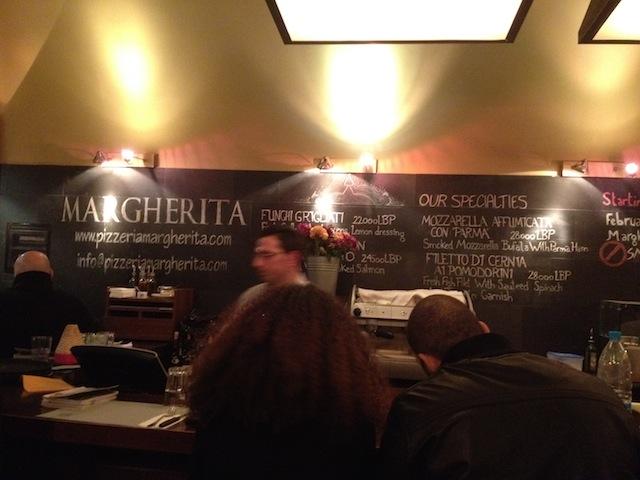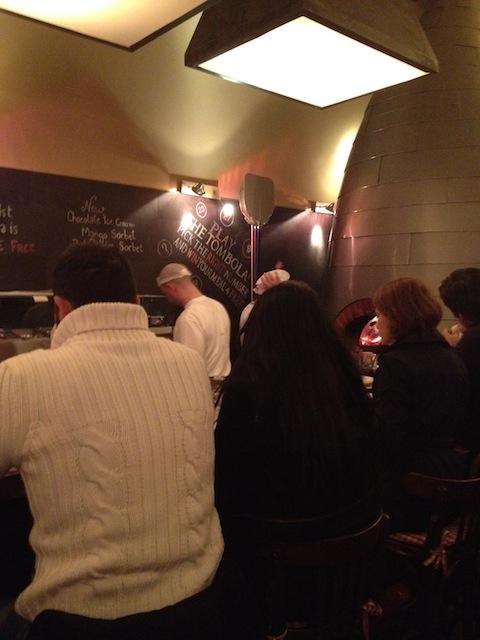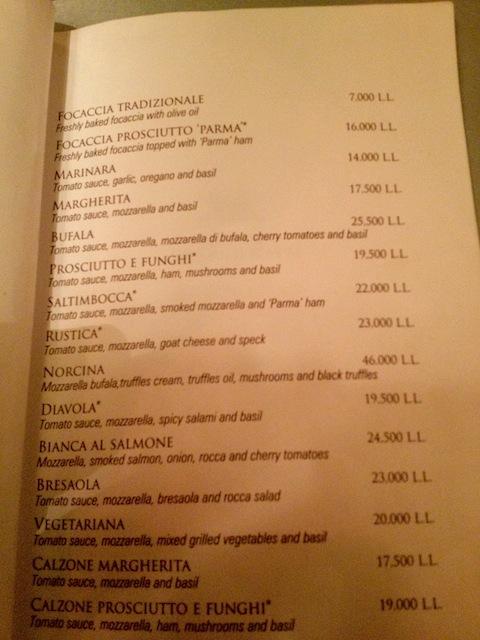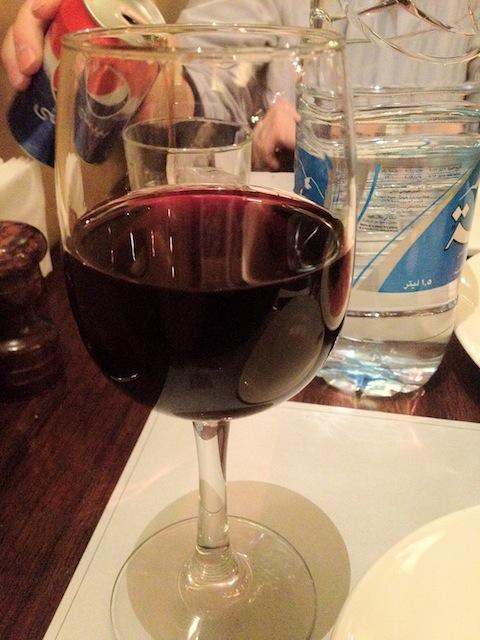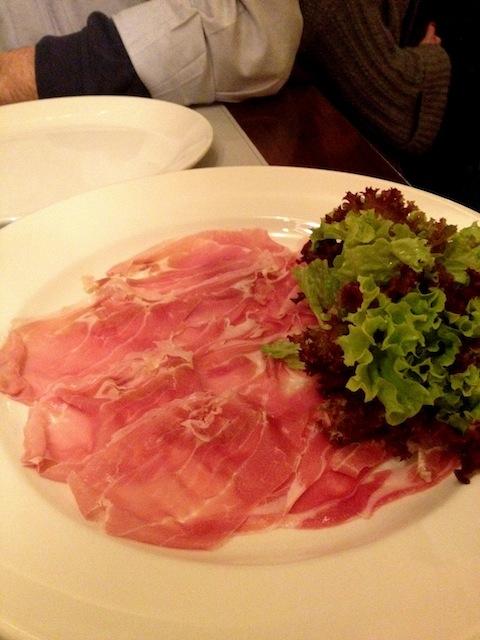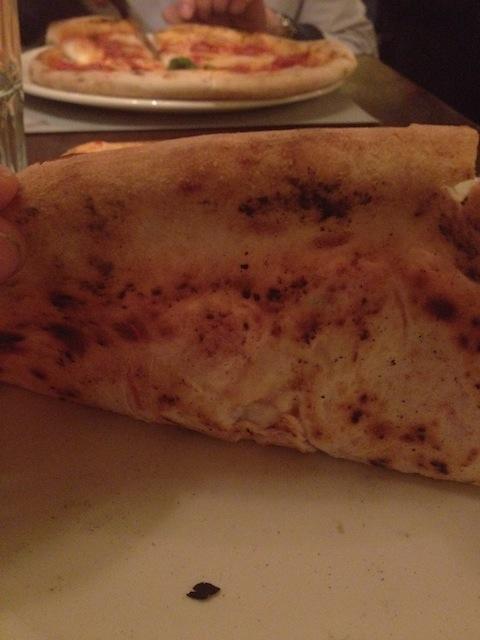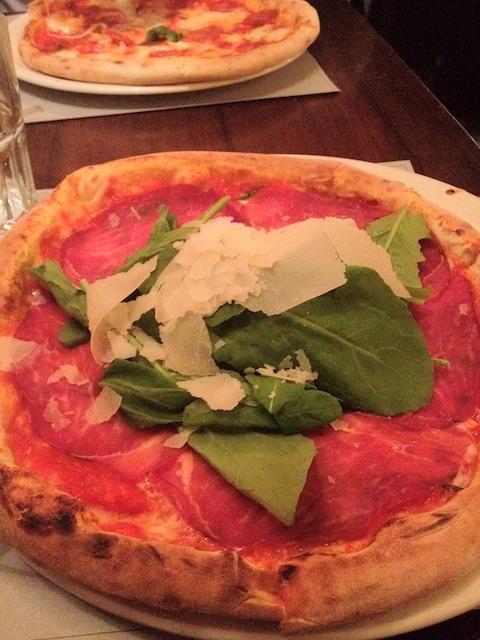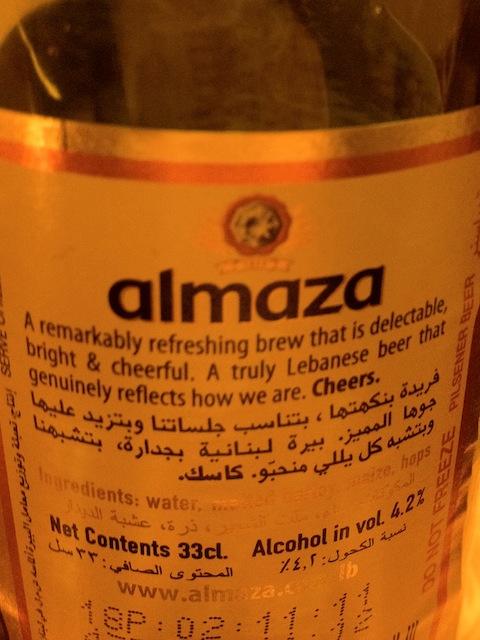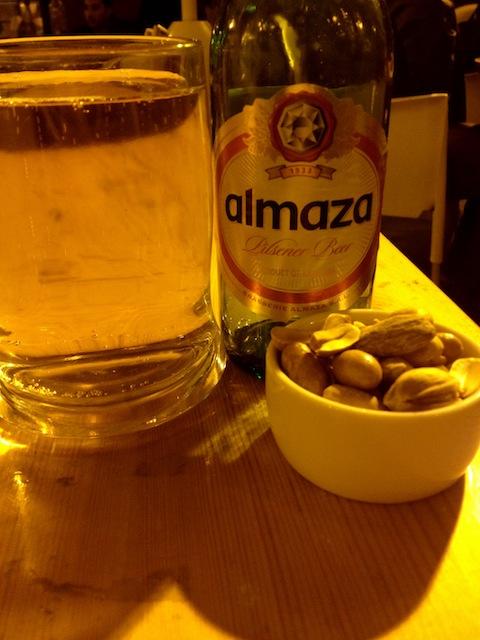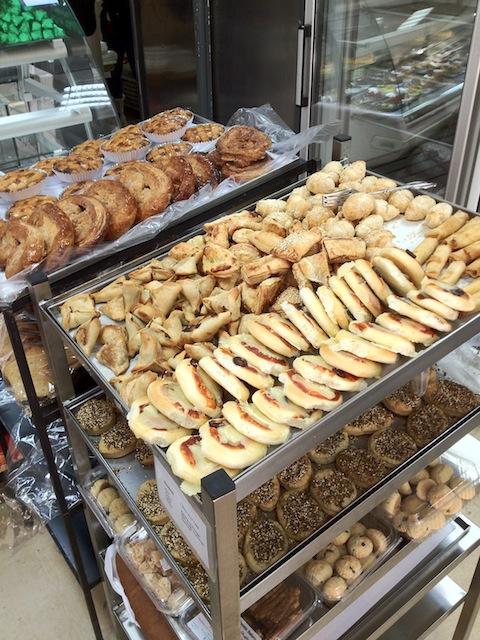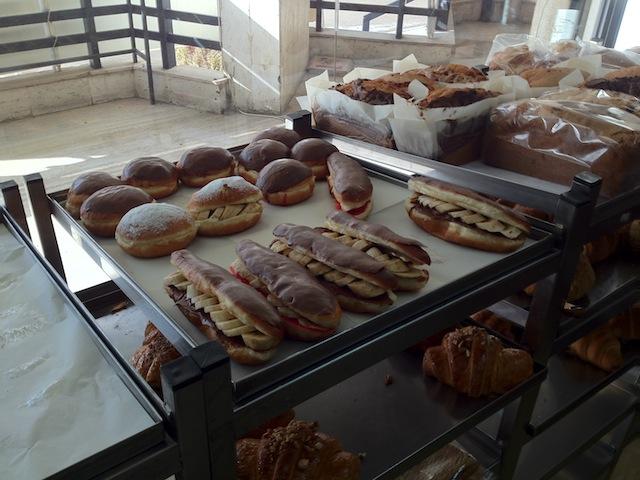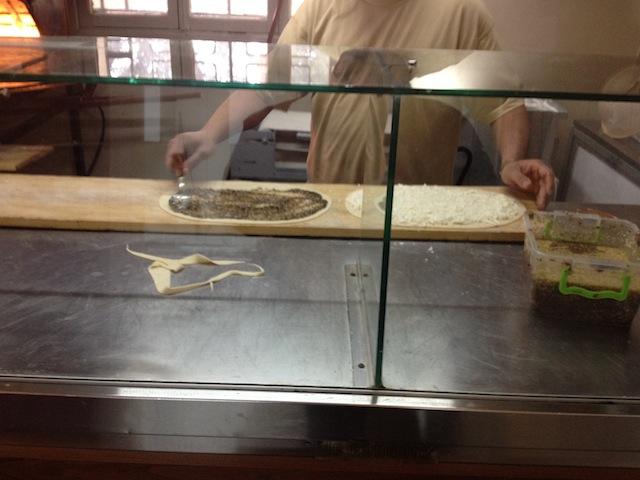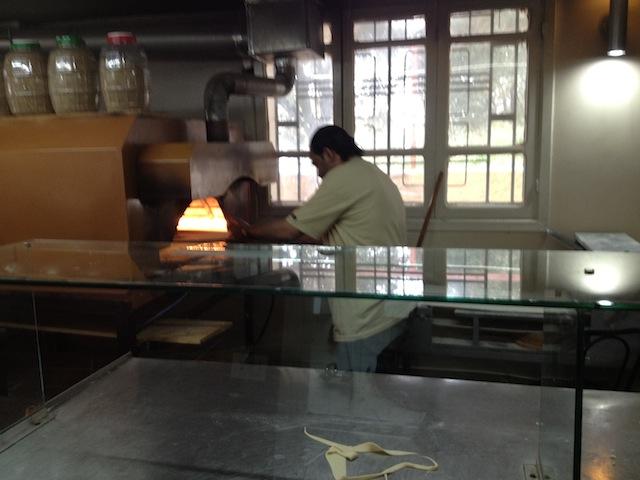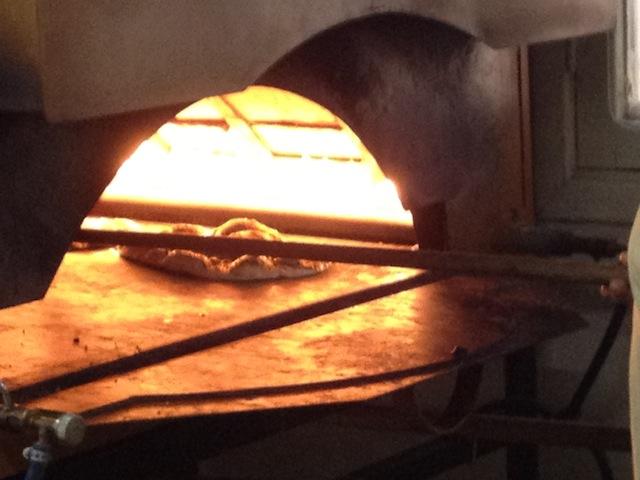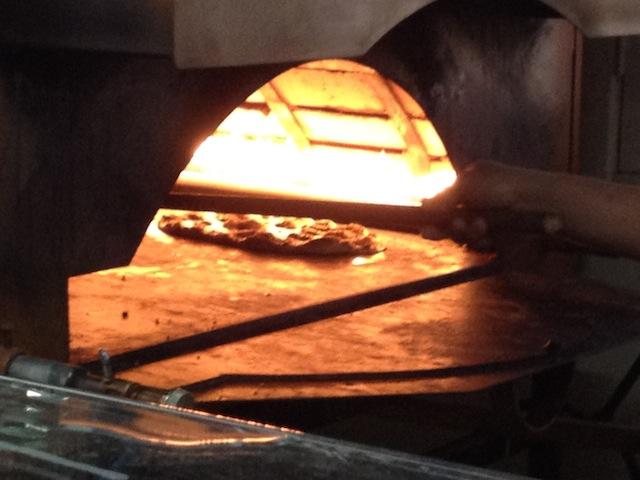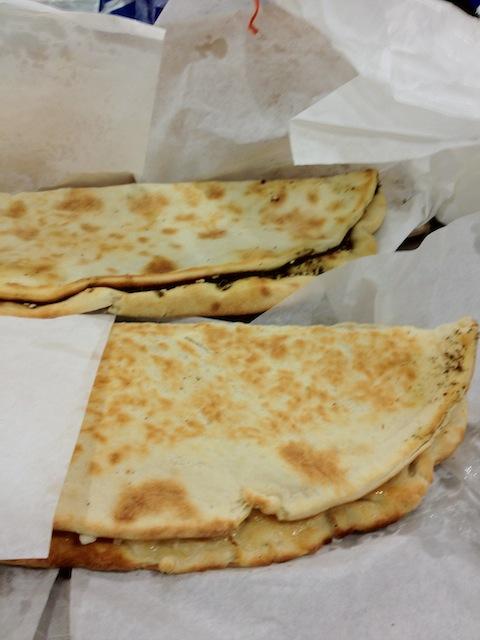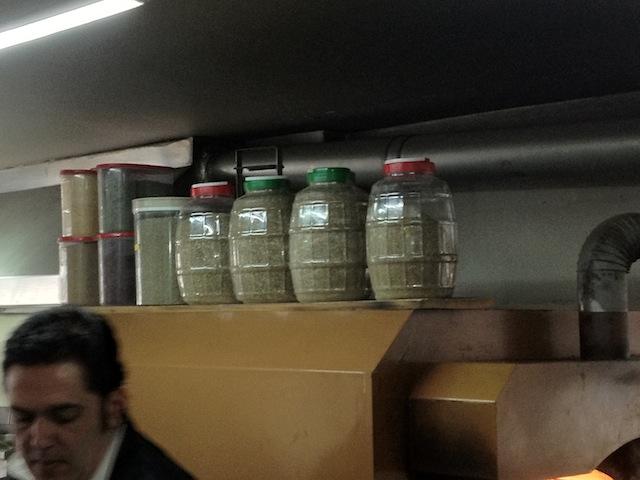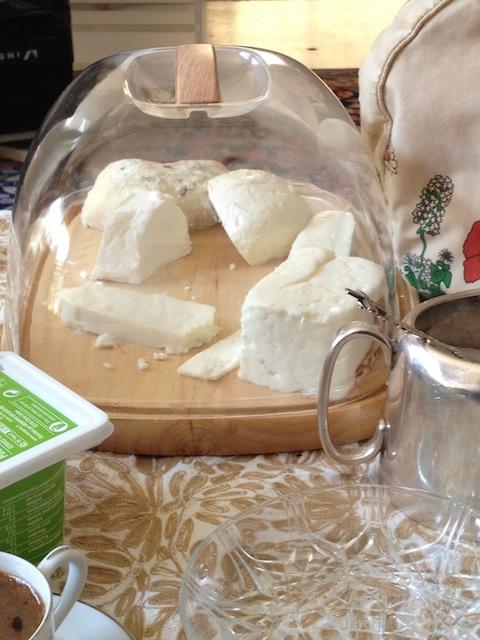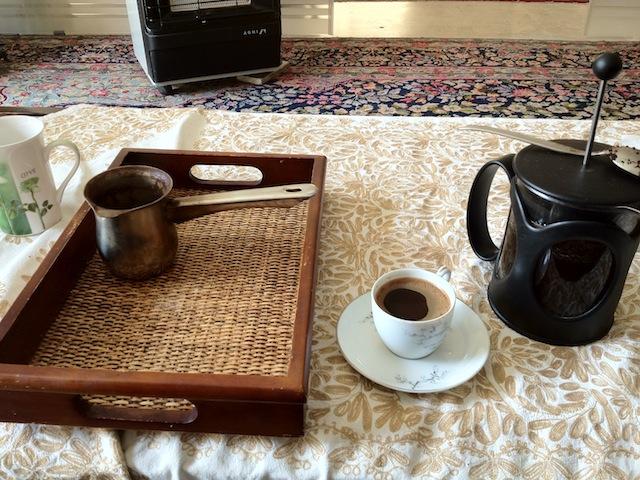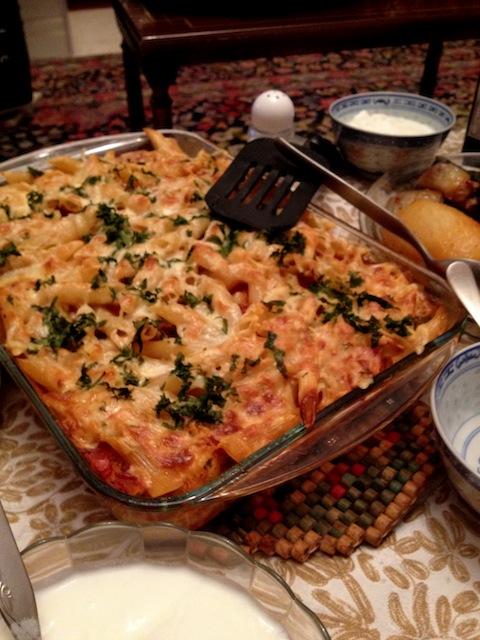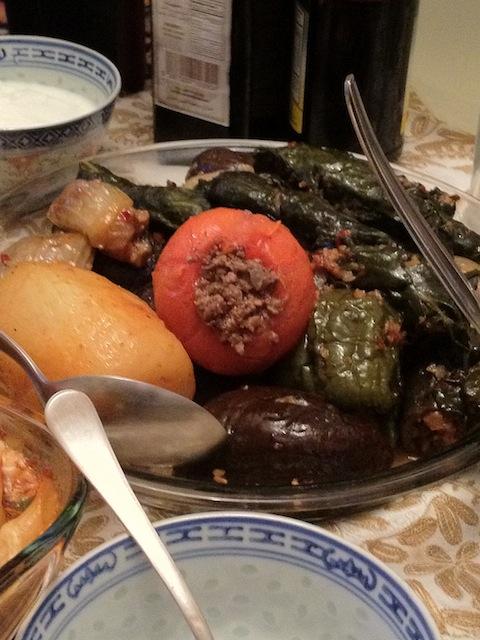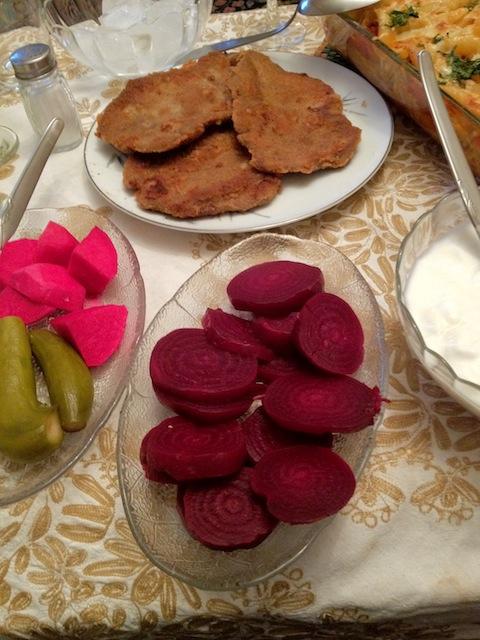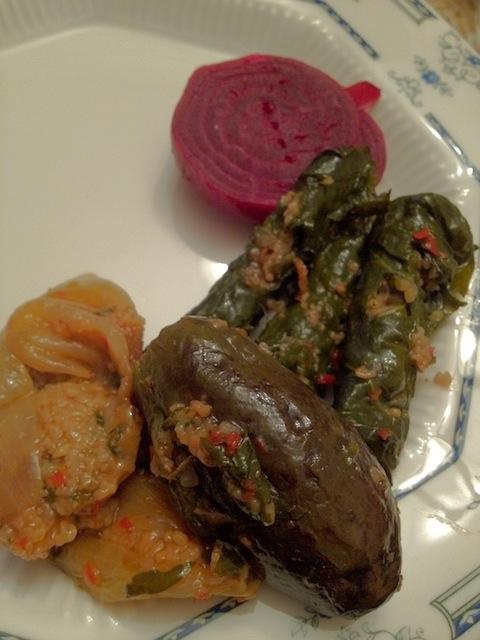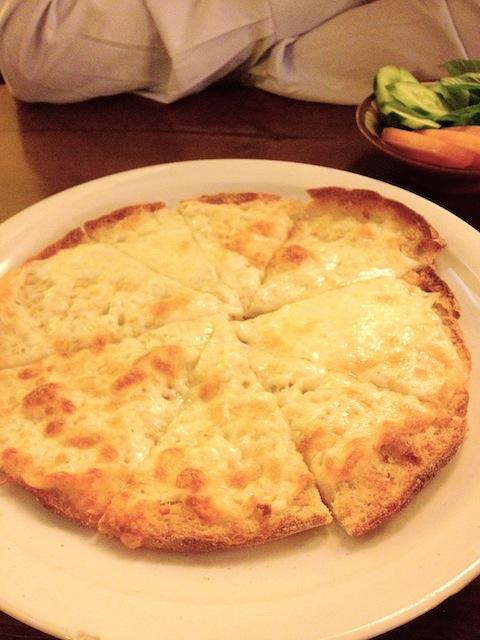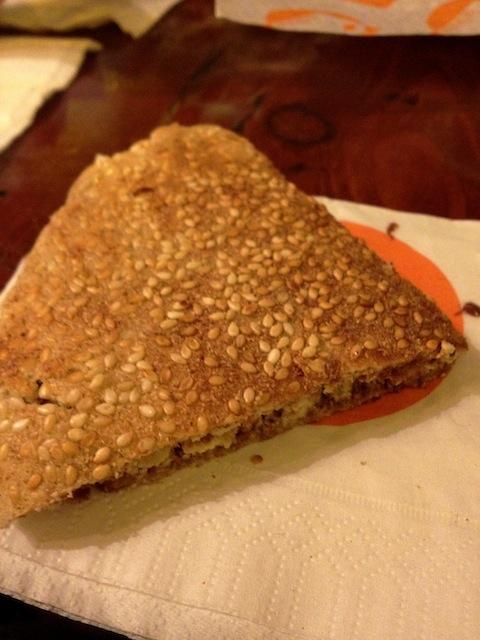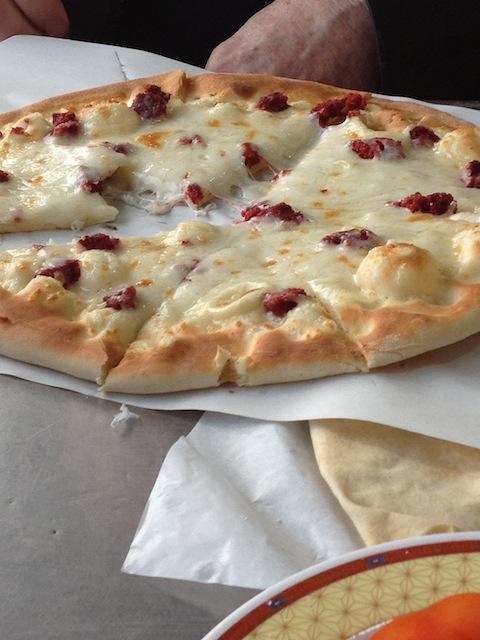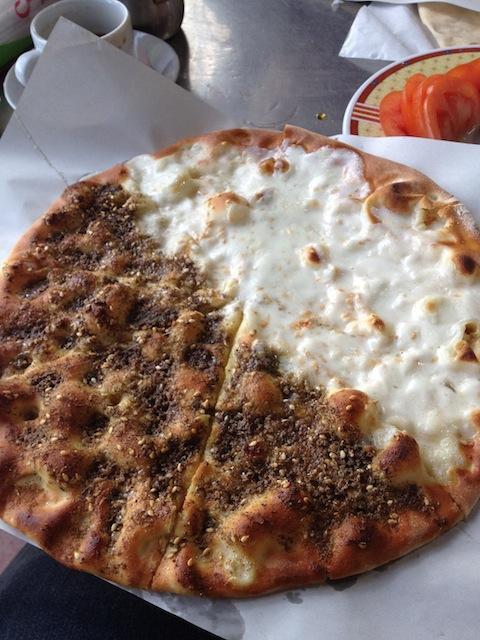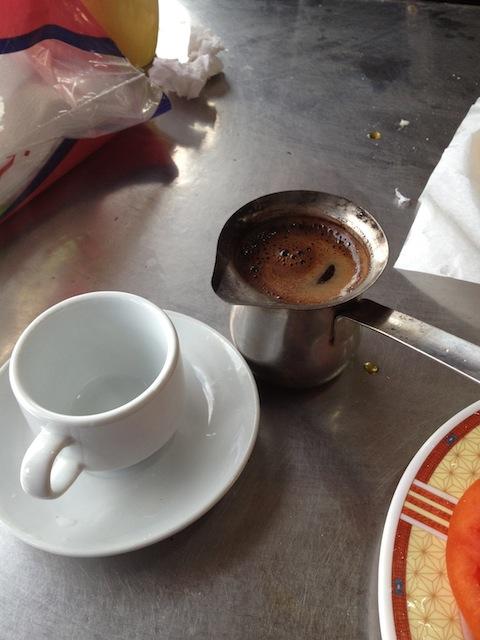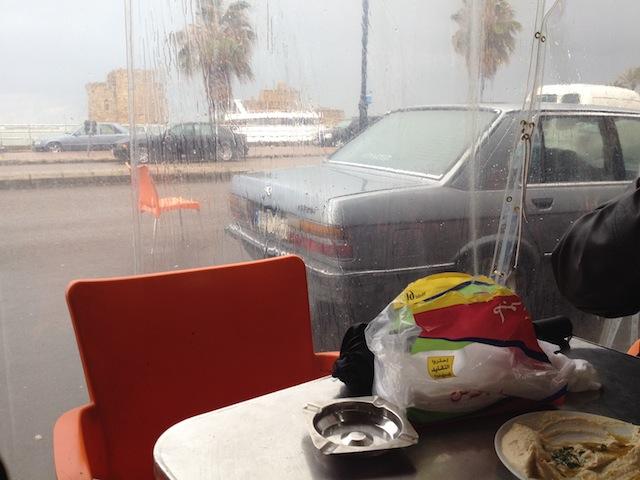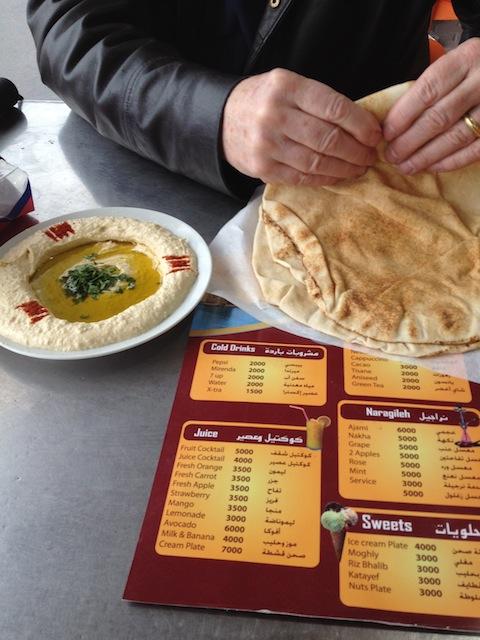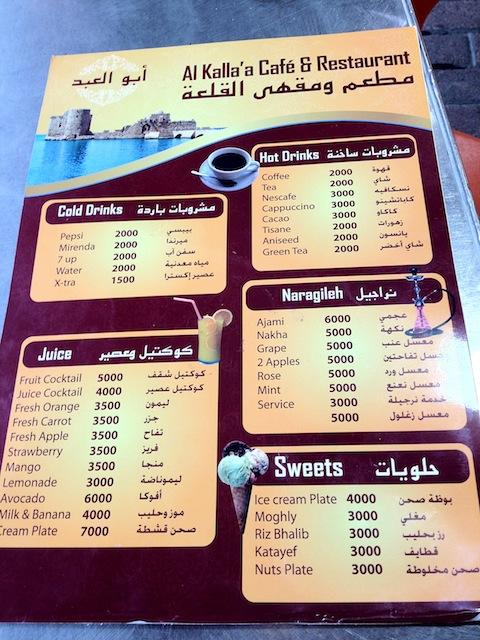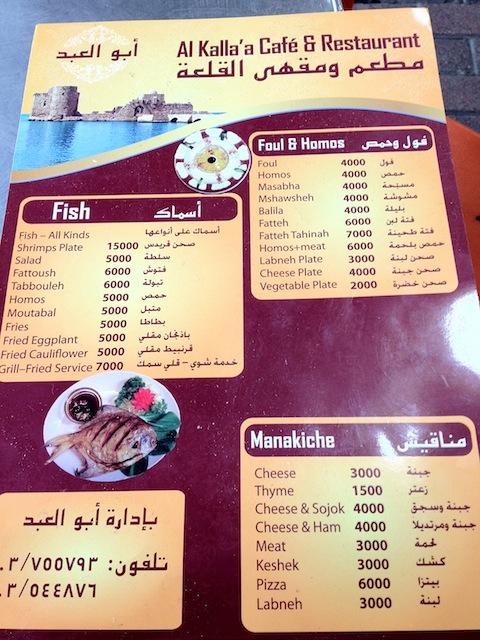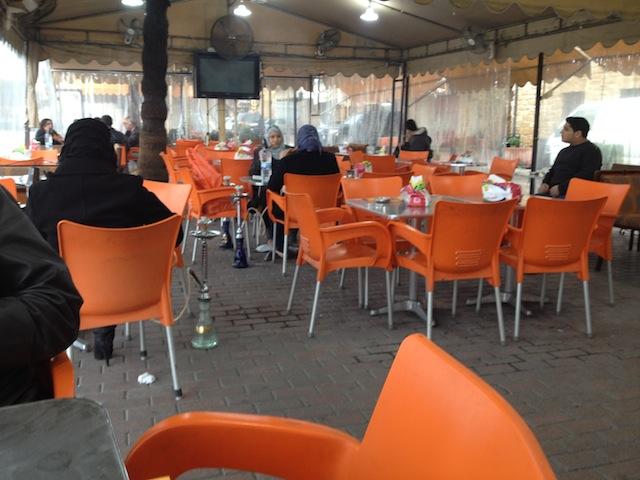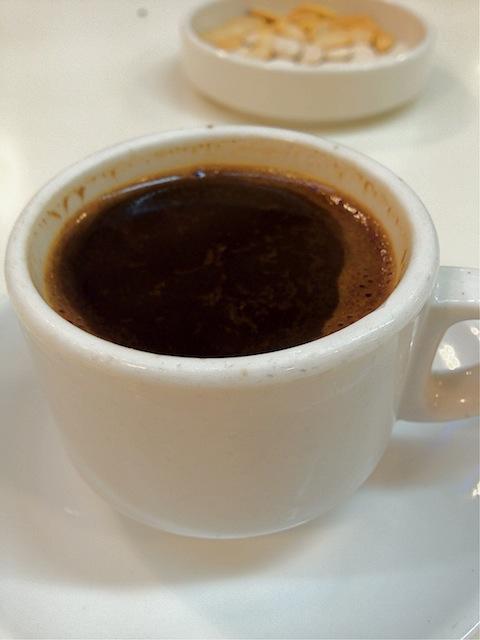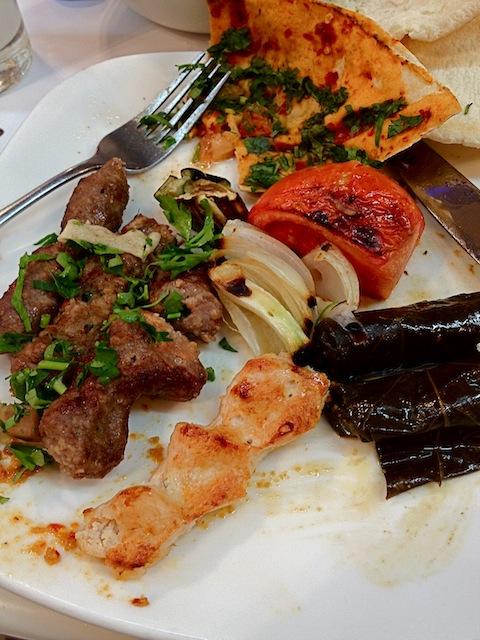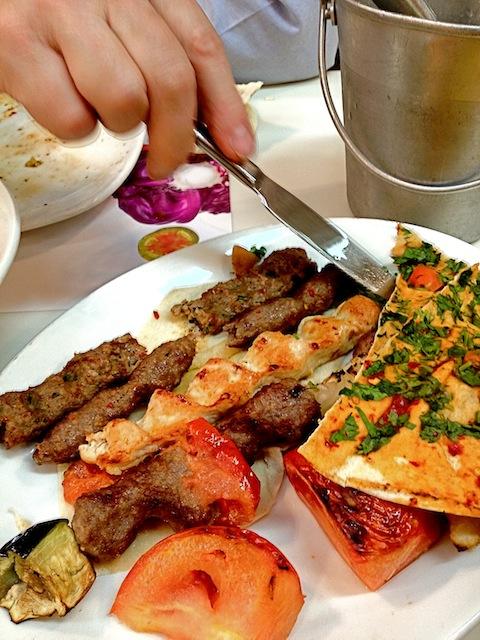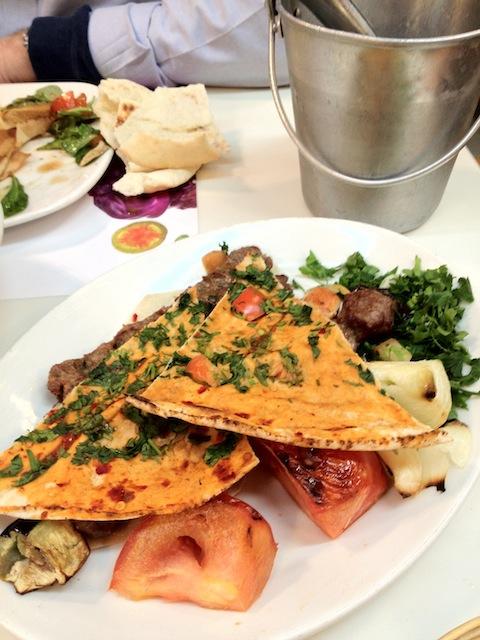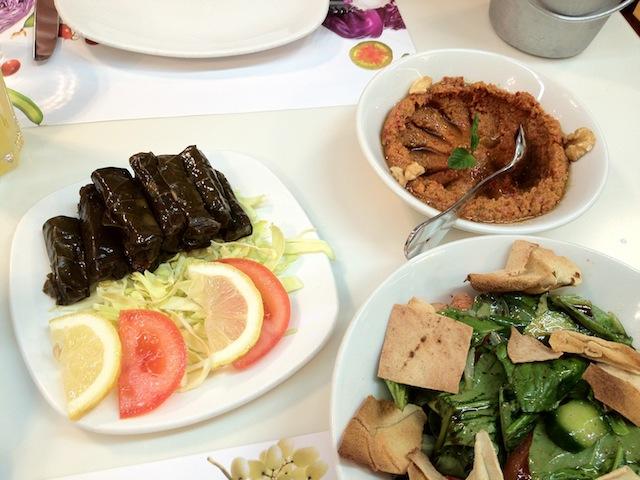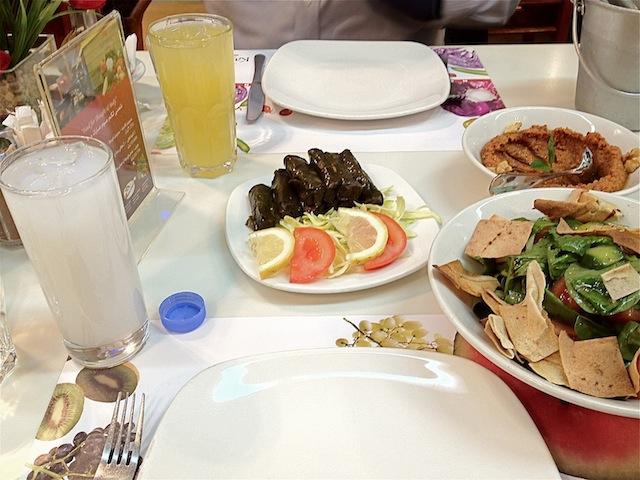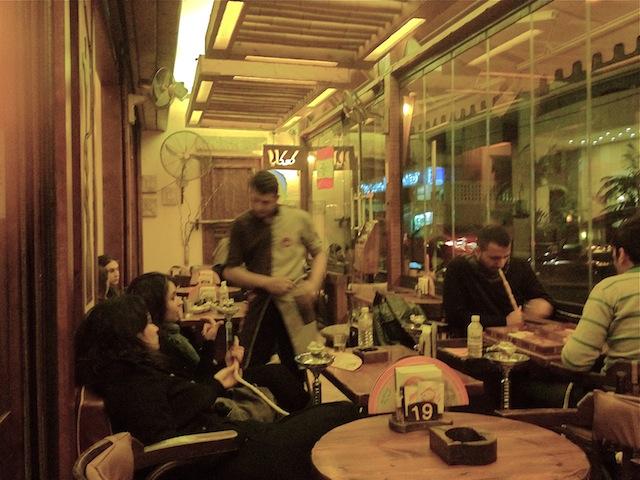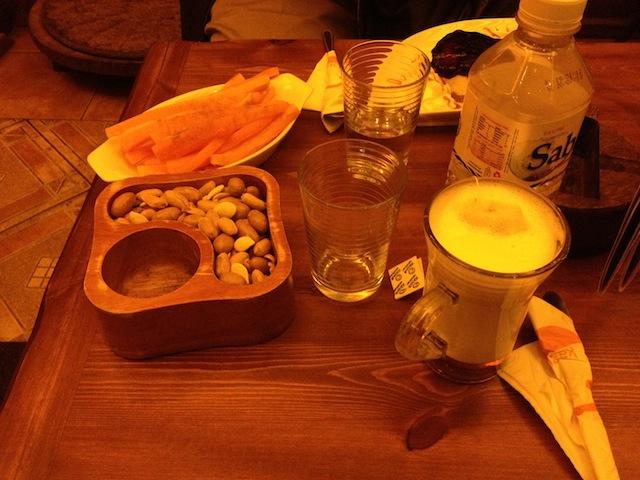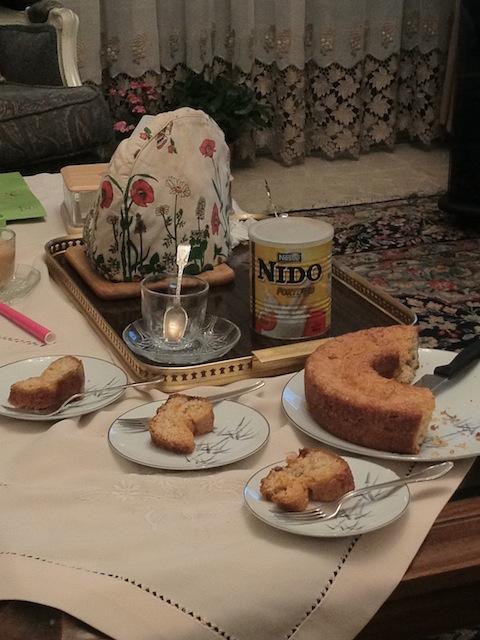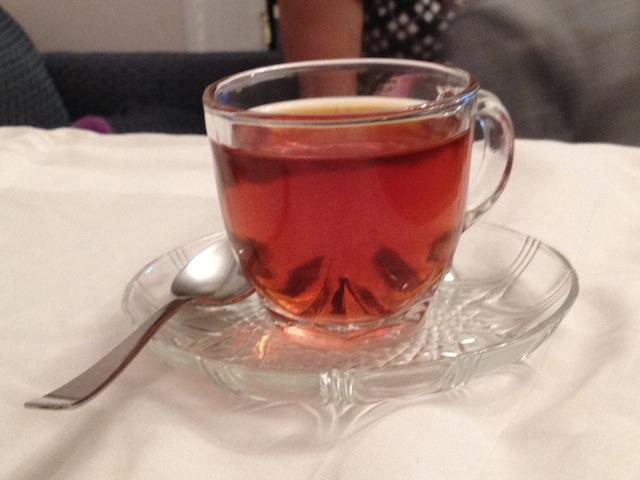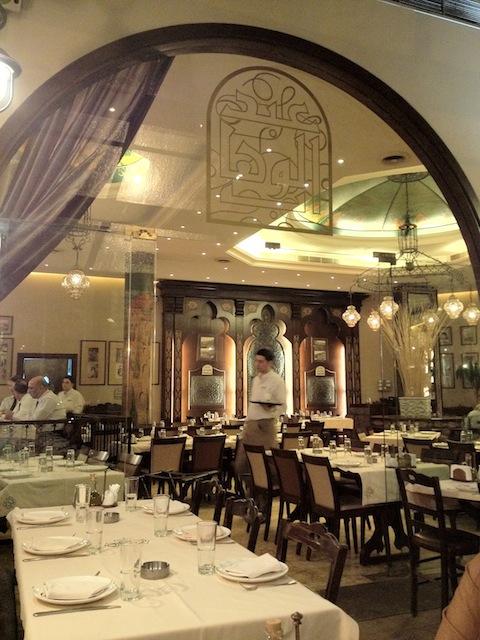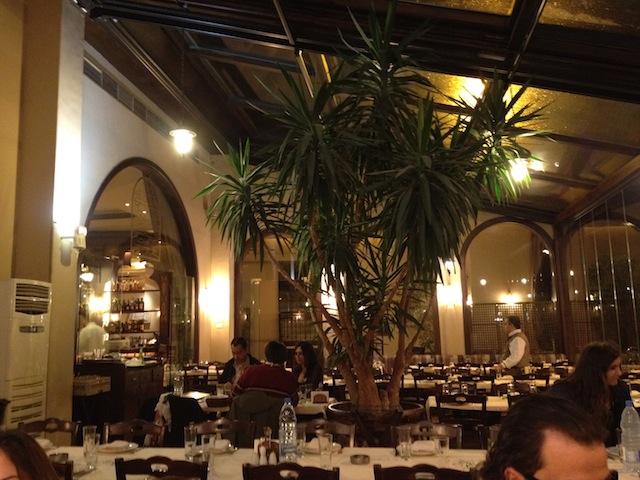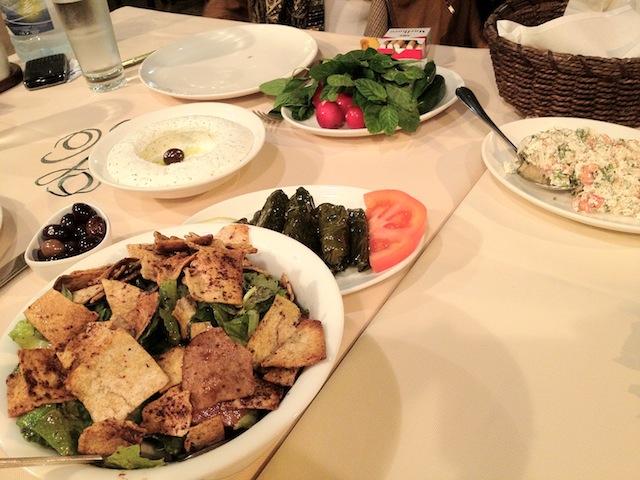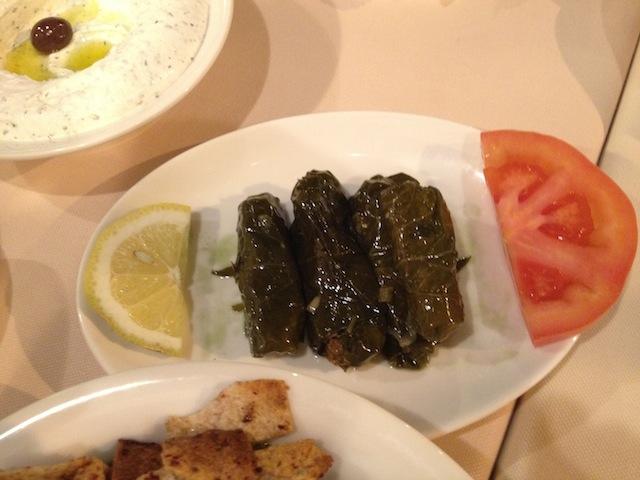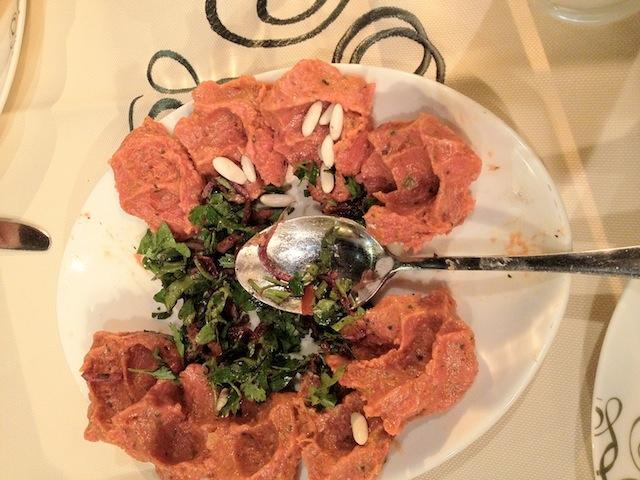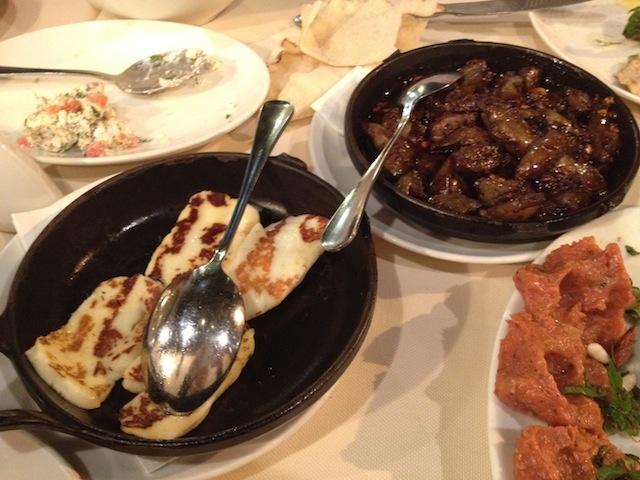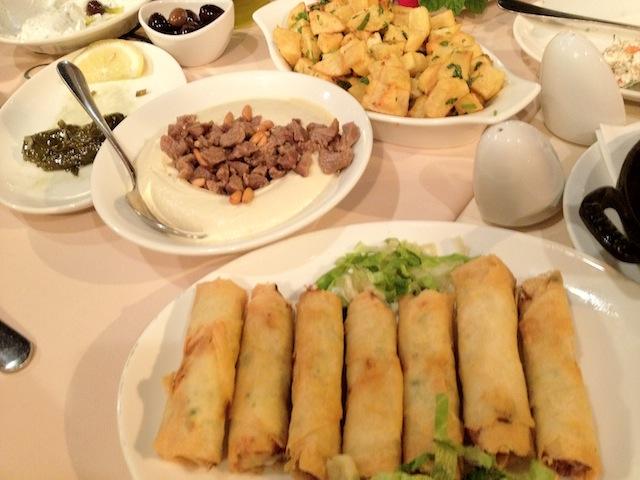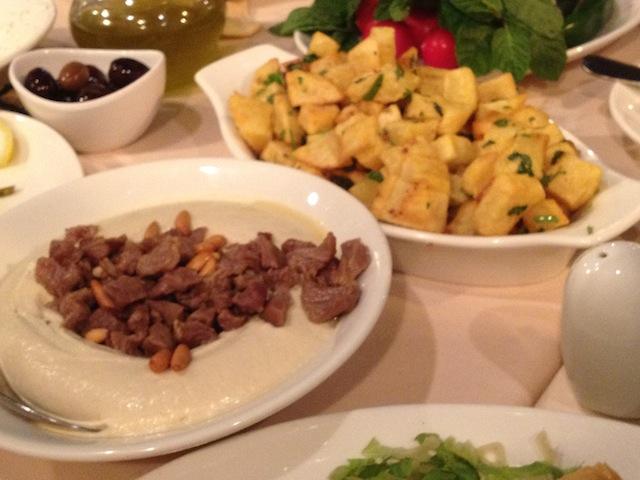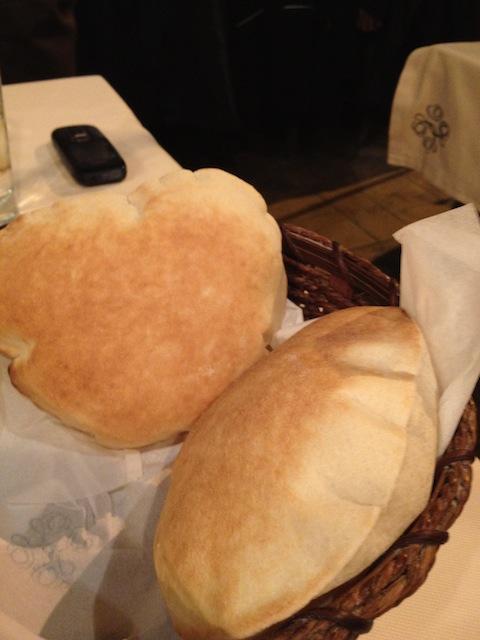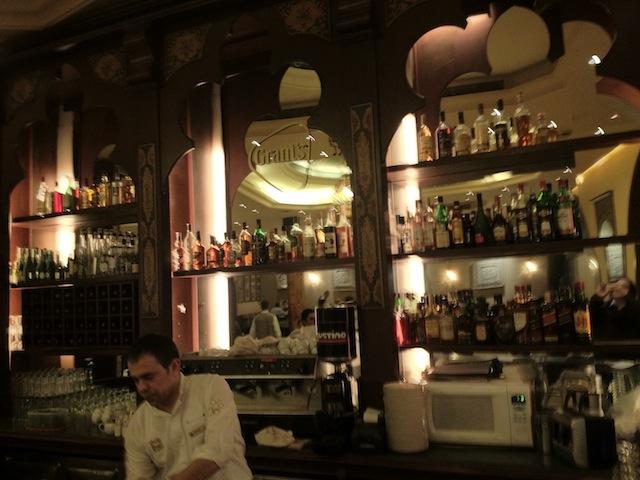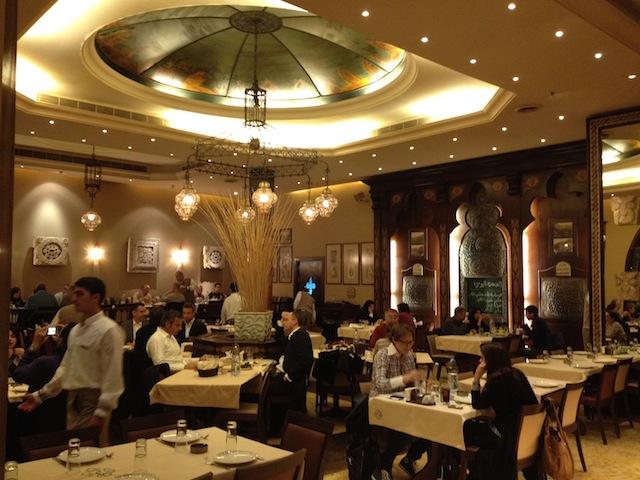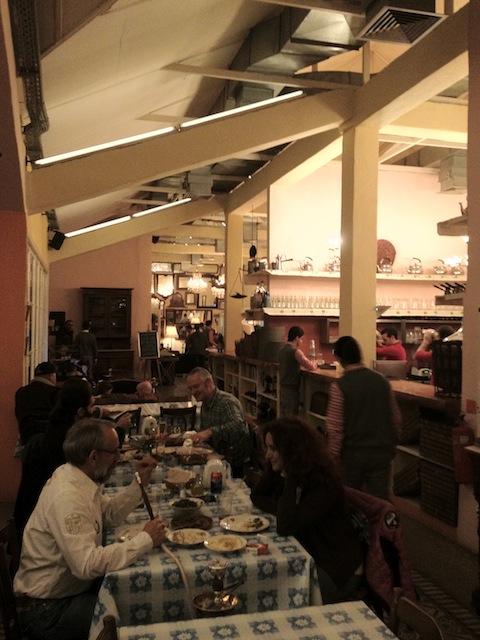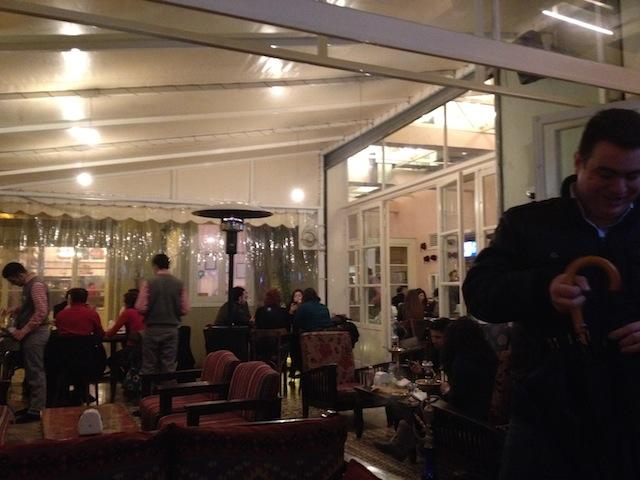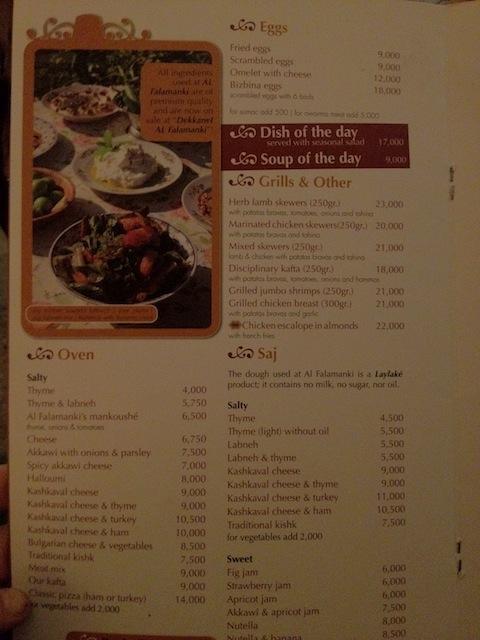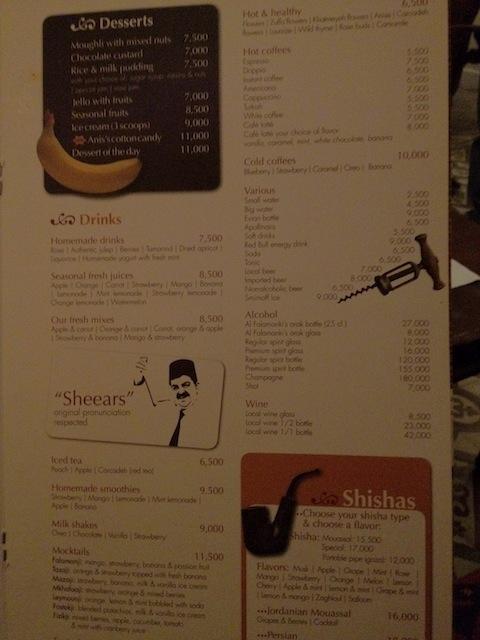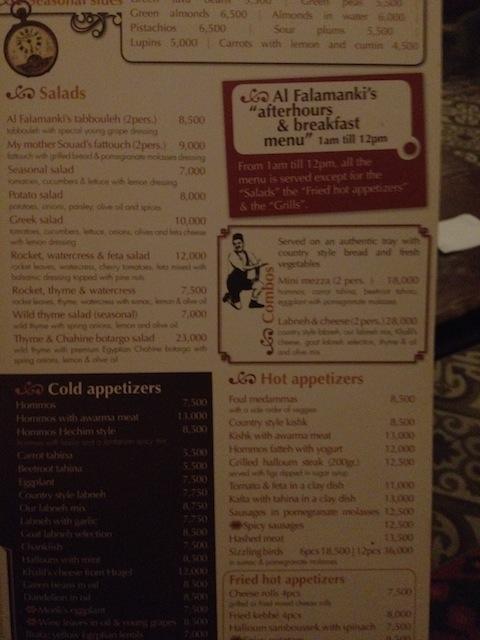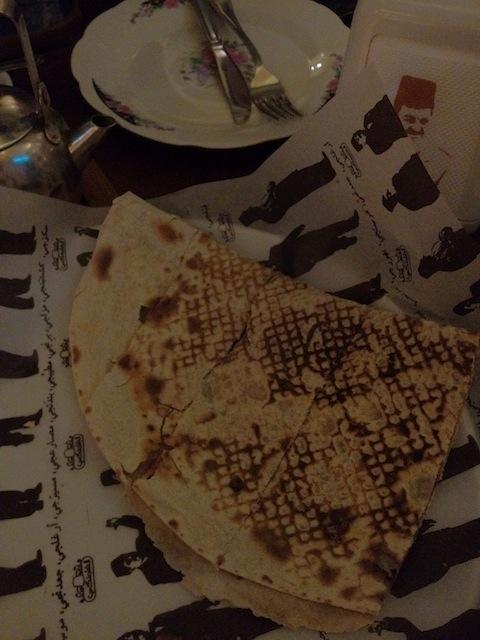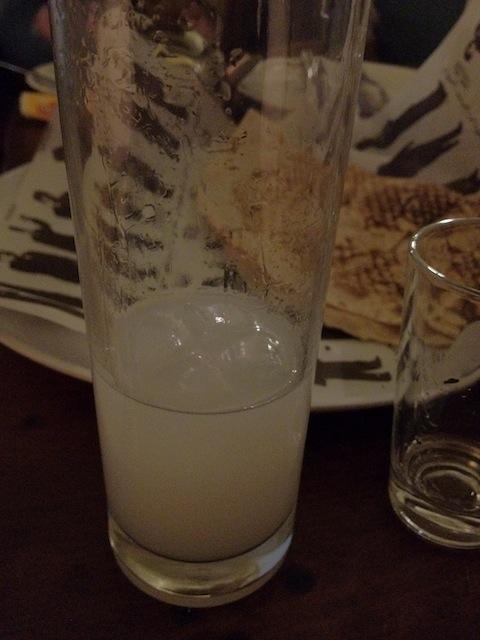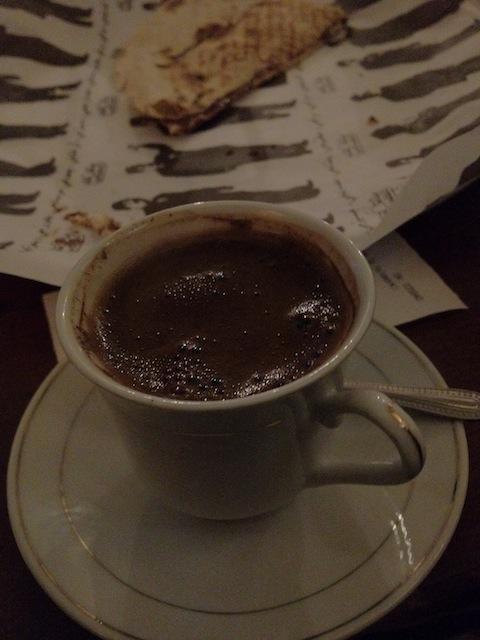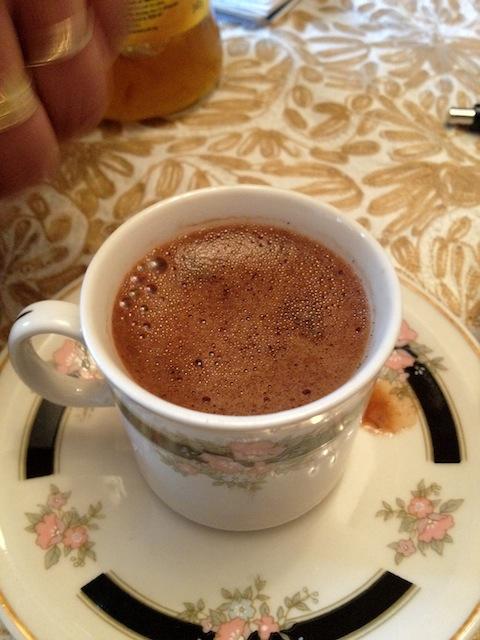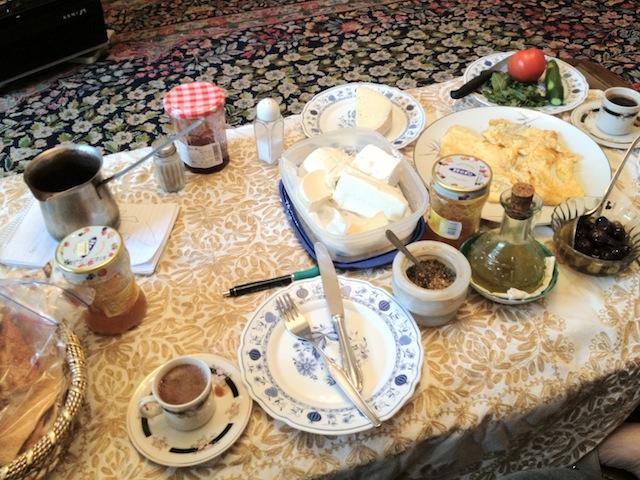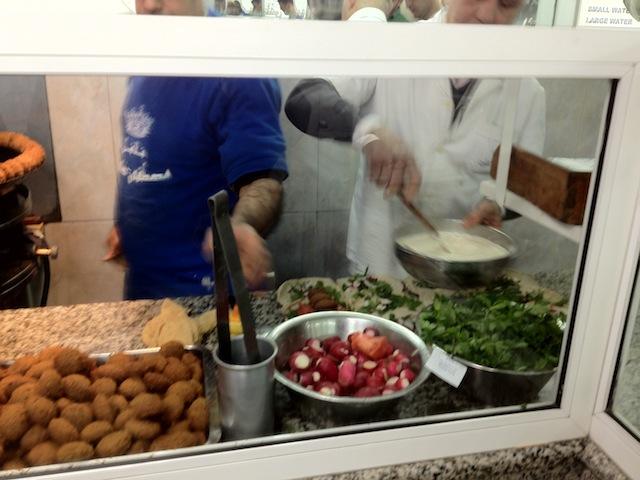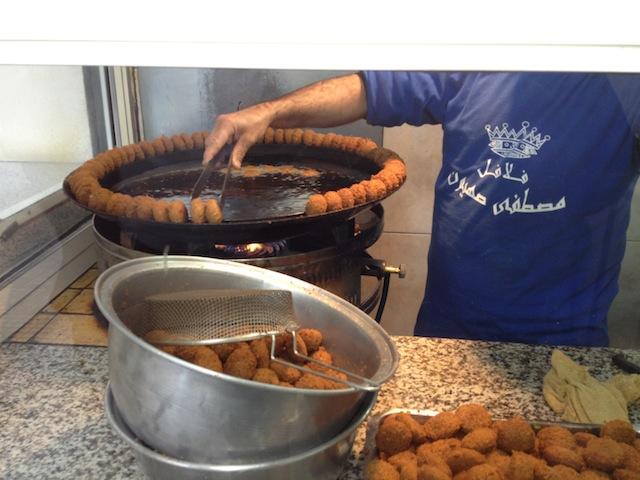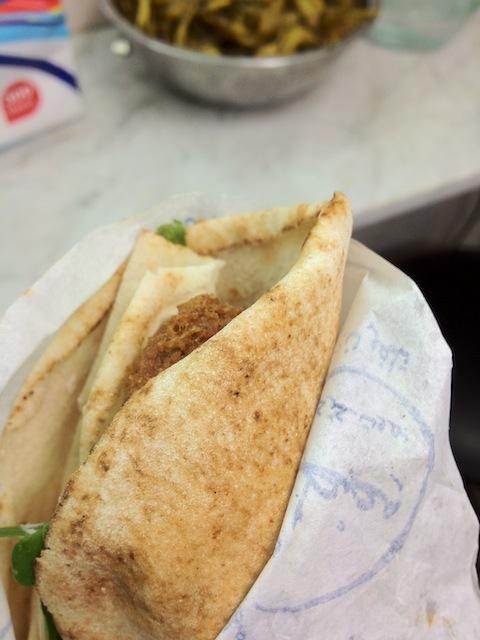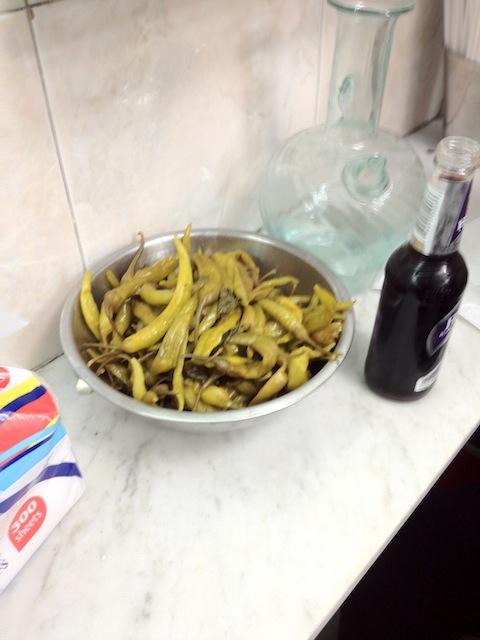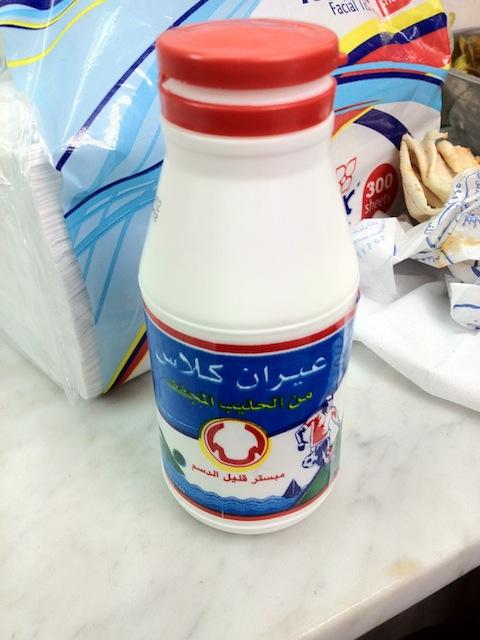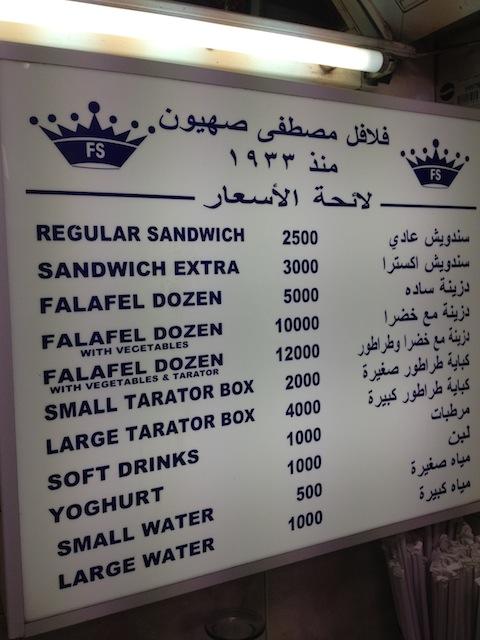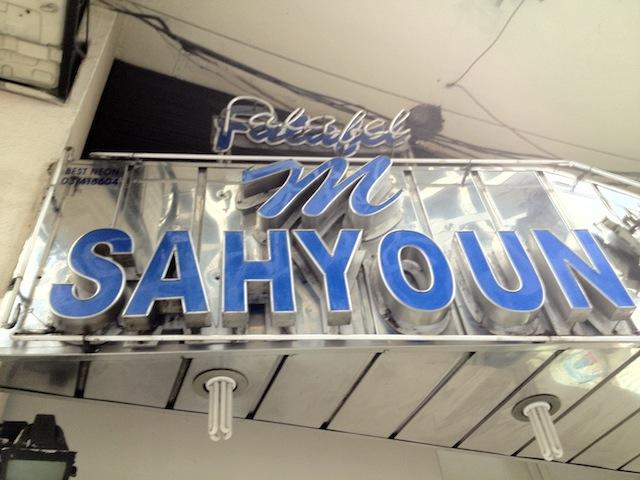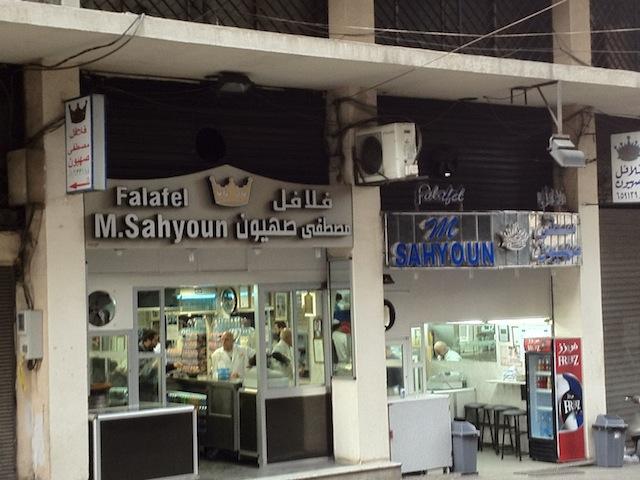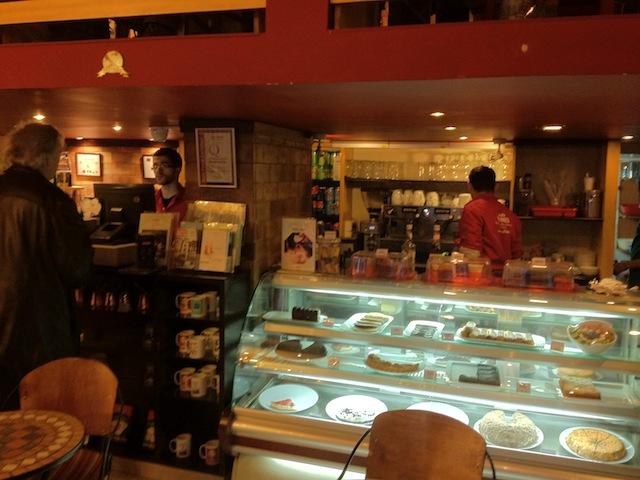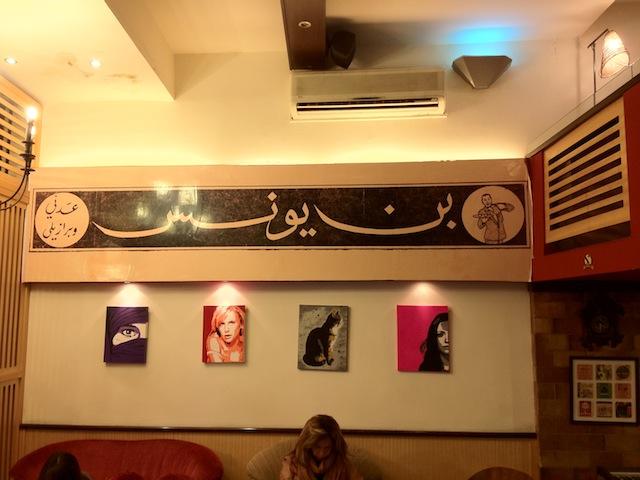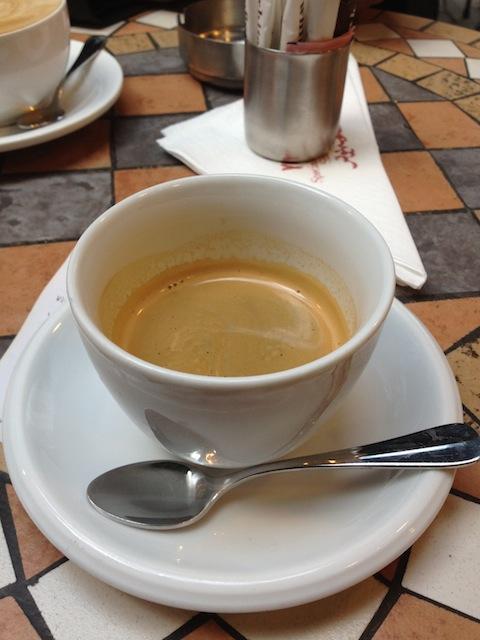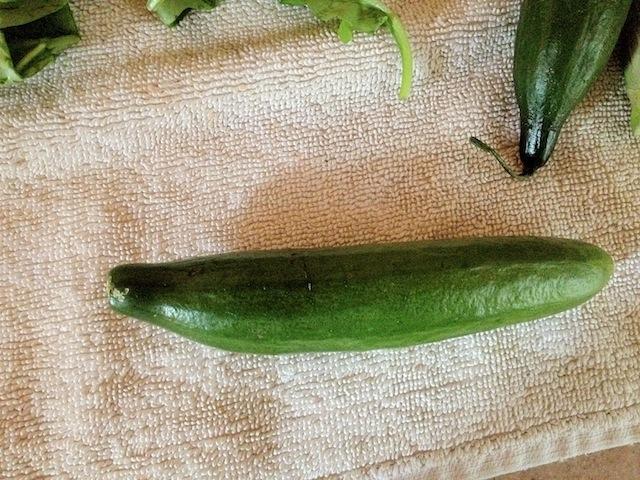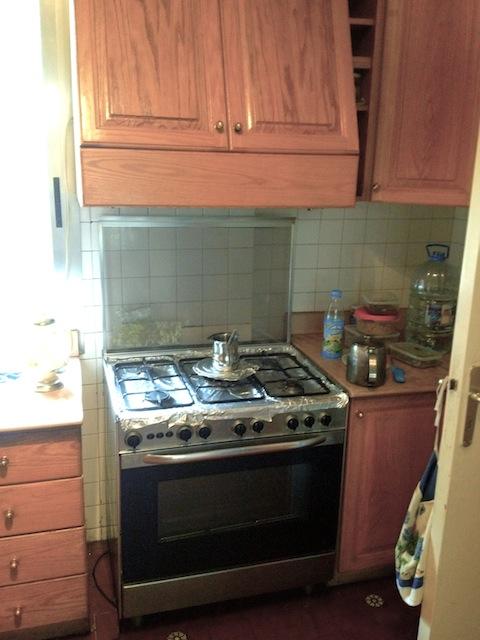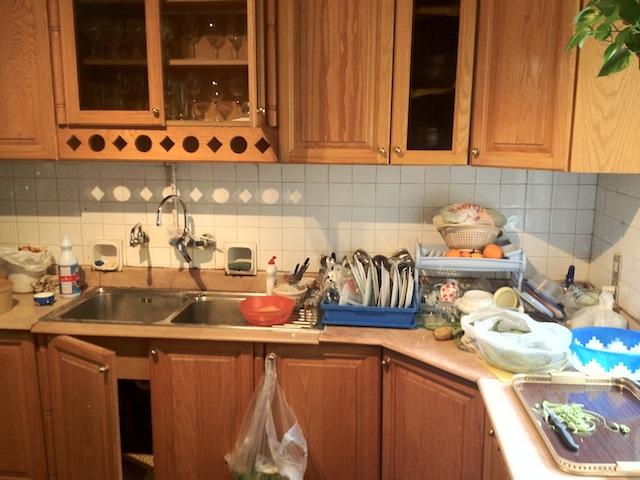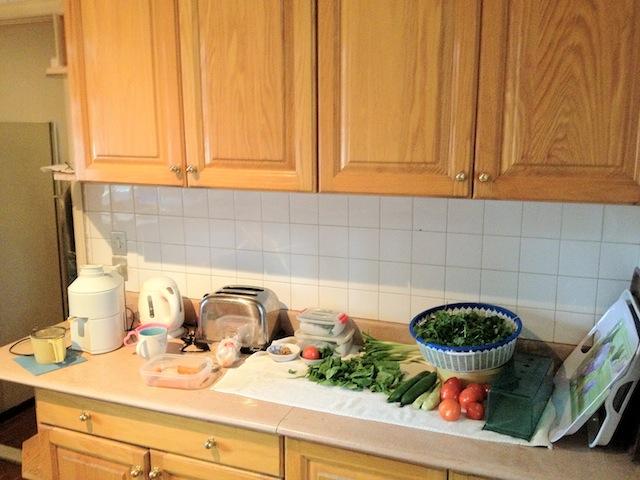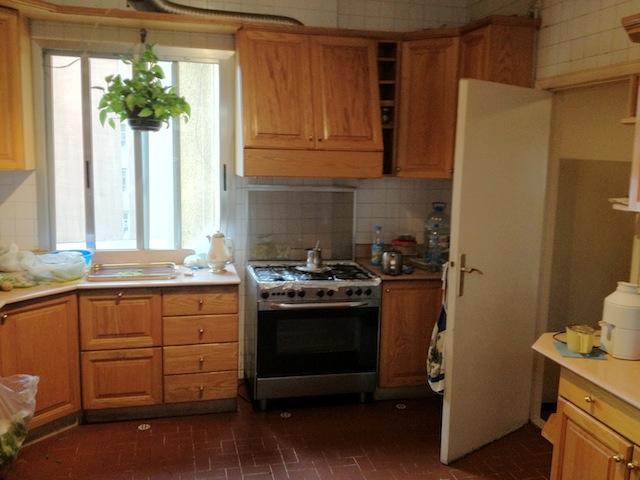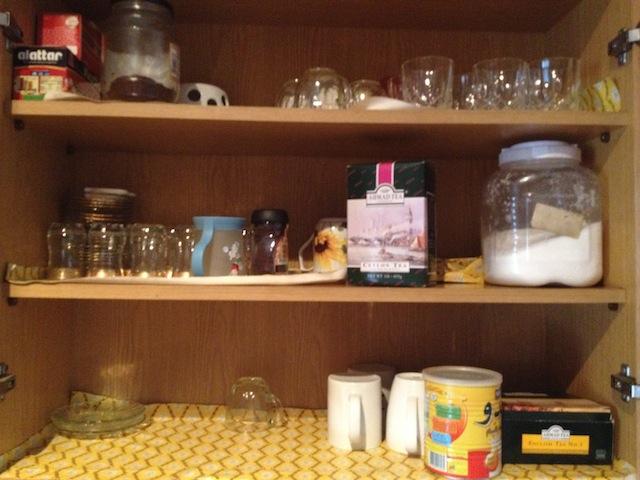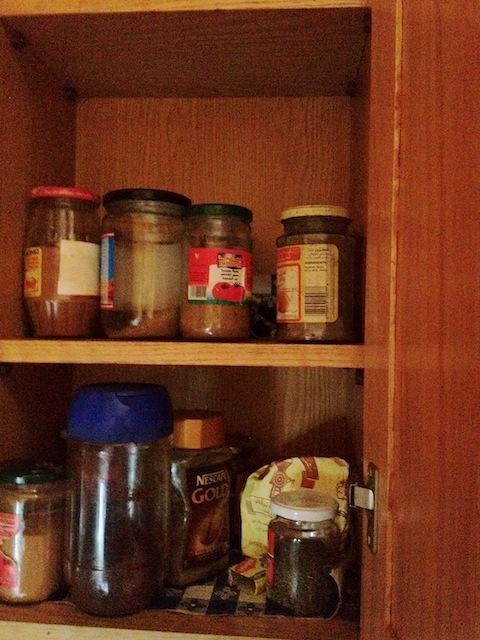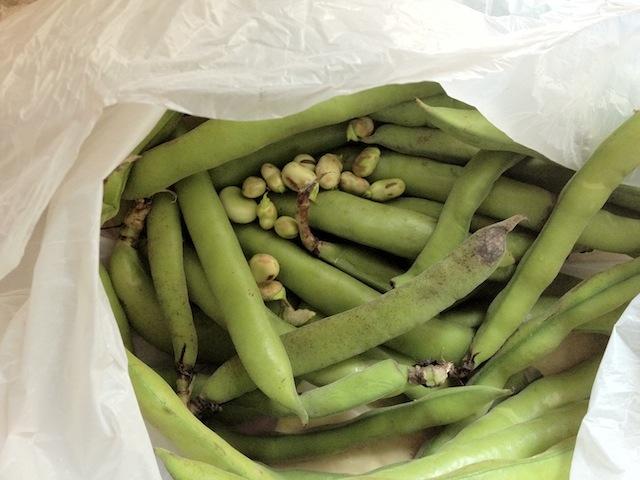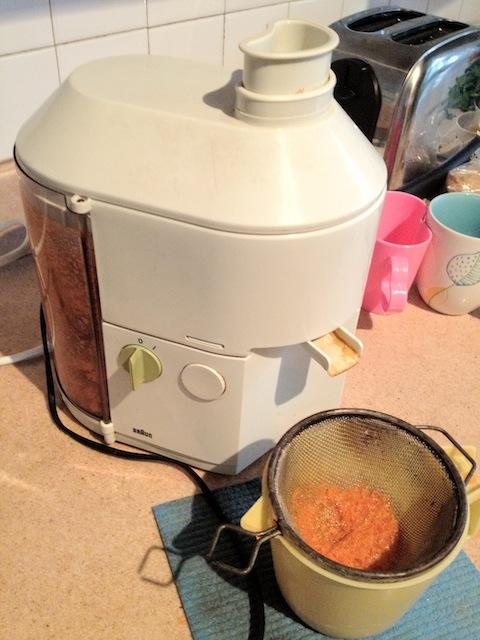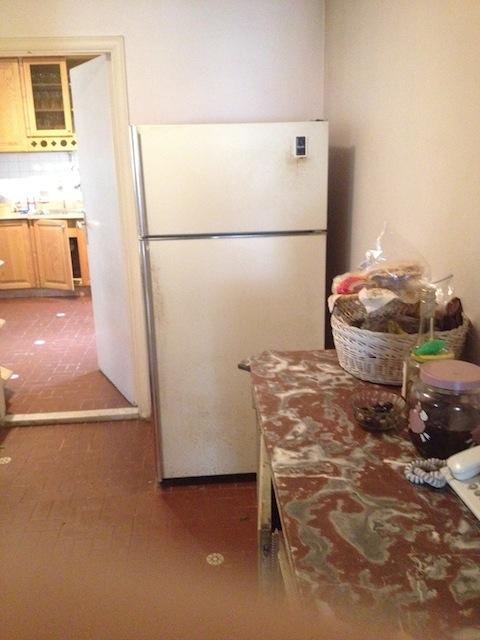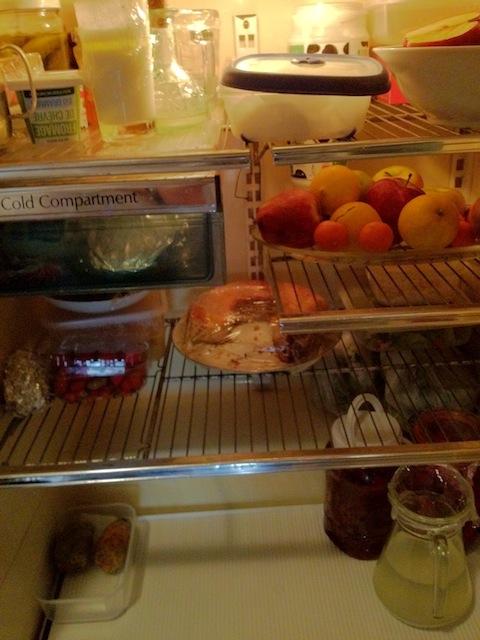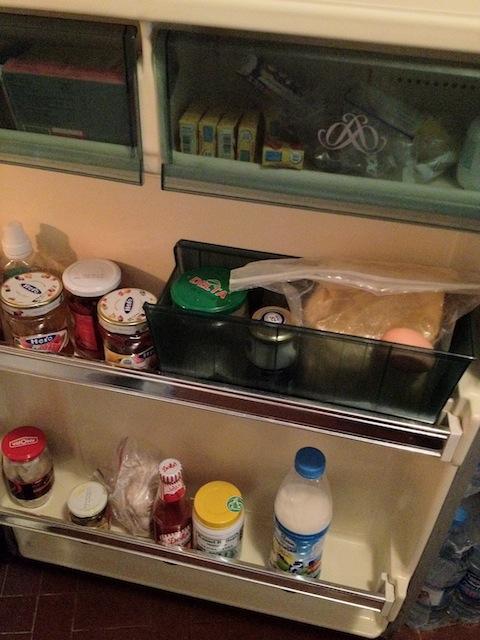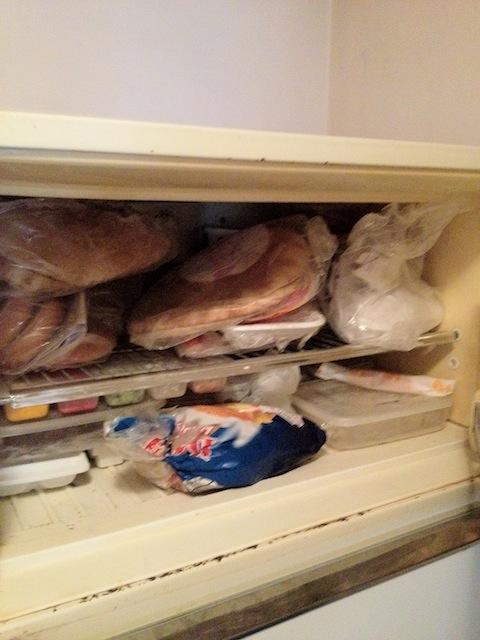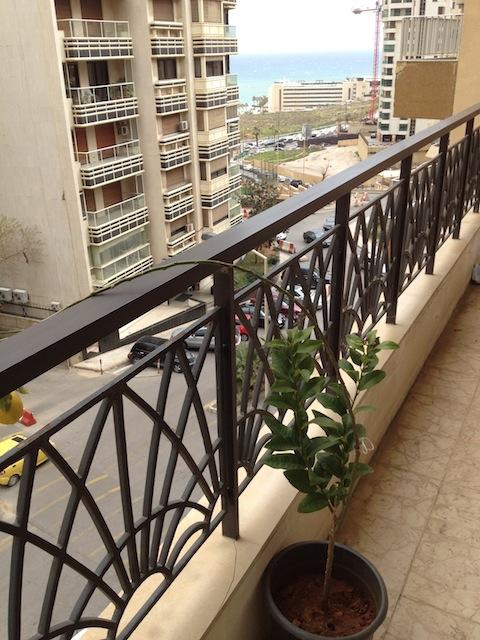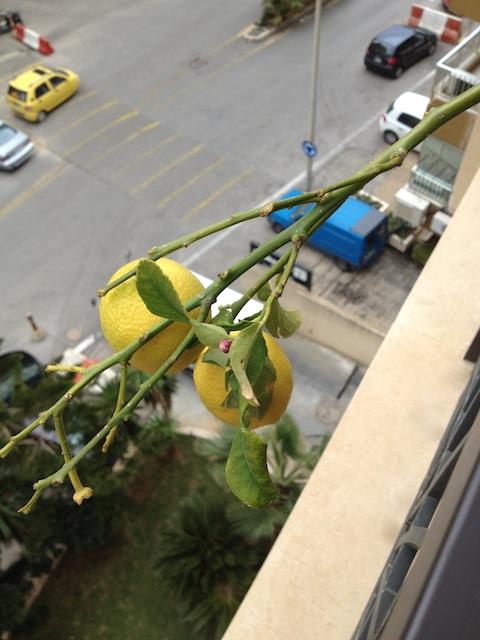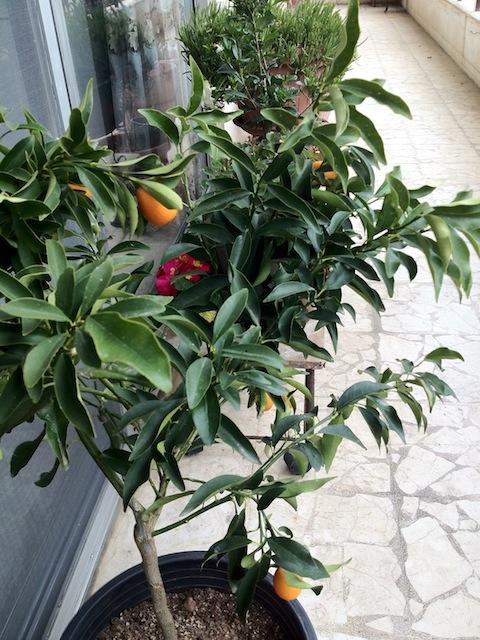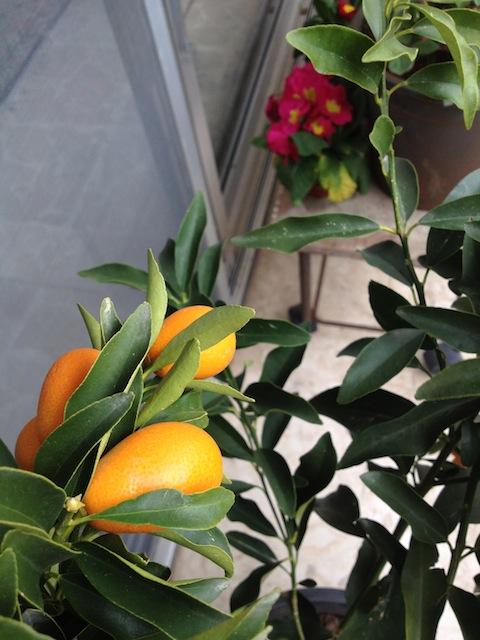-
Posts
2,823 -
Joined
-
Last visited
Content Type
Profiles
Forums
Store
Help Articles
Everything posted by Hassouni
-
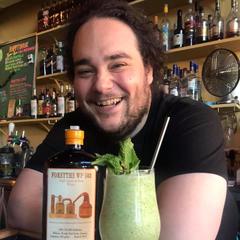
eG Foodblog: Hassouni (2012) - Beirut and beyond
Hassouni replied to a topic in Food Traditions & Culture
Never heard of that dish, unfortunately. Olives are often presented in oil, but I'm not sure how they're cured. They're very firm fleshed, medium sized, a nice dark brown for the black ones, and a light green-grey for the green ones. They're not tart so much as bitter, the green ones more so. I think they're the best olives in the world My family...has no idea! I think it'd take too long to explain... -

eG Foodblog: Hassouni (2012) - Beirut and beyond
Hassouni replied to a topic in Food Traditions & Culture
I hear Cairo traffic is unbearable but I can't imagine anything worse than here - no public transport! So, the answer to aioli here, that I think you mean, is just called toum (thoum = proper Arabic for garlic, toum in Leb accent). The homemade version IS basically an aioli, the commercial and restaurant version is more like mayo with a HELL of a lot of garlic in it. It's standard with any grilled chicken dish, notably shish tawouq (pron. taawou' - Arabic q is dropped and turned into a glottal stop in most of the Levant and Egypt) and chicken shawarma. It's so intense that if you don't like garlic, don't even order tawouq or chicken shawarma, cos they slather it on like it was the apocalypse (like so much else here - they say the Lebanese lust for life is because there may not be a tomorrow, given the history here). You will definitely have garlic breath the rest of the day! No hiding from the girlfriend or wife that you haven't been snacking on chickeny treats Lemons...are lemons. I've never found much variance in lemons anywhere, as opposed to limes, which aren't that common here. -

eG Foodblog: Hassouni (2012) - Beirut and beyond
Hassouni replied to a topic in Food Traditions & Culture
Dinner tonight - my mom gave my dad and me the option of going out (there's a lot of guilt piled on for not eating at home...), so go out we did - and pizza was desired, so upon the recommendation of many friends, we headed to Jemmayze (aka Gemmayzeh, but with a soft j sound), which for the last decade has been THE nightlife and artsy area of Beirut. In the summer it's impossible to even walk around at night, but now it wasn't so bad. The recommendation specifically was Margherita, often thrown about as the best proper pizza in Beirut, which is full of ho-hum pizza places. Winter or not, the place was packed, but we got seats, or should I say, bar stools, right away. Ze oven: And the pizza menu. Despite billing itself as a pizzeria, they have quite a long menu of insalate, antipasti, primi piatti, contorni, secondi, dolci, and finally, pizze: But first, a starter of prosciutto di parma. Yes, pork in the Middle East. Blasphemy is so delicious! In fairness, Jemmayze is solidly Christian territory, but still, the novelty amuses me. It was very melt-in-the-mouth-y. Mm. Pizza time - I ordered the Bresaola, my dad got the Diavolo: Nice leopard spots: The pizza was quite delicious. Not the best I've had but certainly the best I've had in Beirut (although another place, Olio, comes quite close), and definitely worthy of satisfying my quality pizza craving. I'd say it fell quite squarely into the Neapolitan side of things - very thin, wet center, chewy, very slightly yet not overly crispy crust - plain tomato sauce. Had the cheap offering from Château Ksara, one of the most famous Lebanese vineyards, their "Réserve de Couvent" : Not world class, but quite pleasant and a good value at all of $6. Later, unwound from some argile-related stress at Ka3kaya, with my own argile and an Almaza down the street at Café Hamra. As usual, free nuts come with alcohol: Almaza is a pretty unspectacular easy drinking "international lager" - it's owned by Heineken, but it's a hell of a lot better than macro American beer. It's great in warm weather, when you can order it "Mexican" - I swear to God, this is what they call it. What's a "Mexican beer" as far as the Lebanese are concerned? Beer in a glass with a salted rim and a shot of lemon juice in. Really. As absurd as it sounds, in the miserably muggy summers here, it's really quite refreshing, even if it's made with Lebanese beer! In the summer you even get asked if you want your beer " 'aadi wala Mexican?" (normal or Mexican?) However, the rest of the year, it kind of seems out of place, so a "bira 'aadi" for me. The best part of Almaza is the label: This amuses me to no end -

eG Foodblog: Hassouni (2012) - Beirut and beyond
Hassouni replied to a topic in Food Traditions & Culture
I actually go to Saida quite a lot, typically once or twice per visit, as my best friend here is from there and lives there (though works in Beirut). I really love it. Al Baba is the BEST! And yeah, the weather here is a mess... Thanks for the "2allee6a" info! (I hate the numbers, btw...but god do the Libnenis here love em). The ones without the hole are abundant in Tripoli, btw. I'm guessing sans hole is 'alleeta, since the ones at Ka3kaya are hole-less. Zeit just means oil. Zeit zeitoun is olive oil - zeitoun being olive, obviously the words are connected. However, when something is referred to as "bil zeit" it almost always means olive oil as that's the one used in almost all cooking, when butter or clarified butter is not used. Yeah, the seafood here is great. To be honest, the food quality here is superlative. So much is grown, farmed, or caught a stone's throw away. I suppose this is what produce in the Central Valley of CA must be like! -

eG Foodblog: Hassouni (2012) - Beirut and beyond
Hassouni replied to a topic in Food Traditions & Culture
Thanks for the compliments, eGulleteers! This afternoon went into one of the more famous mountain towns in the hills above Beirut, Beit Mery. It's a beautiful town sprawled across a ridge overlooking Beirut, with views on one side of the coast (some of the best overhead views of Beirut), and on the other side, this time of year, of an amazing valley and snowcapped mountains. One of the problems with these mountain towns, once you get outside the Beirut suburbs, which go straight uphill, is the paucity of decent casual eateries. It's either grand restuarants, often in hotels, or take away mana'ish type places. Beit Mery is no exception. Lunch today was takeaway mana'ish, plus some baked goods and sweets from a European style bakery across the road. The mana'ish was good though, and made entirely from scratch to order - many places make a bunch and then reheat them when you order. Not here: Getting slathered with cheese and za'tar w zeit: Into the oven: Burn baby burn! Za'tar inferno! And done: m Massive quantities of za'tar: Goodies from across the street: -

eG Foodblog: Hassouni (2012) - Beirut and beyond
Hassouni replied to a topic in Food Traditions & Culture
Breakfast today was the standard labne sandwich at the hotel, but when I got to the flat, lo! we suddenly have a cheese board! Halloum, shari, and some kind of sheep's cheese I guess. And of course: -

eG Foodblog: Hassouni (2012) - Beirut and beyond
Hassouni replied to a topic in Food Traditions & Culture
Sabah il-kheir! (Good morning!) Last night featured two dinners - a light one at home, then a snack and dessert + tea and argile at Ka3kaya (see earlier post) Dinner at home was: more pickles, more salad, some sliced beets, veal escalope (which my family seems to love), baked pasta, cheese and vegetables (ditto) - and, on the Arabic side of things - dolma aka mahshi* aka stuffed vegetables of all sorts - swiss chard leaves, tomato, onion, and tiny eggplants. Dolma is possibly my favorite food, and I could literally eat plate after plate of it, so I had to restrain myself since I knew I was going out immediately. The pasta. I don't know if other Iraqi families do this, but this seems to be something of a staple with us. It's not my favorite because usually the pasta and vegetables are WAY overcooked - today it was better. The dolma. Droooooool. Stuffed with rice, meat, onions, and spiced. There also seems to be a stuffed potato there. Framing it are bowls of yogurt. I wish i had a better picture, but it wasn't very photogenic. Delicious, though... Escalope, pickles, and beets My plate - lots of dolma, some beets, and not shown, later, salad. Chez Ka3kaya: An kashkawan "mashrouha," which is their term for an open-faced, thin ka'ak (or kalleeta as they call them. I asked my Saidawi friend, and he had no idea what this word "kalleeta" is, by the way). This was, to quote from the biography I'm reading, "insanely great." Crispy, cheesy, melty, chewy, I could eat three of these in one sitting. God. This PLUS dolma? Happy Hassouni. For dessert, chocolate and halawe "kalleeta" aka ka'ak. I forgot to take a pic until the last portion was left, but the whole thing is round, about 7" in diameter, and cut into quarters. It was gooey, crispy, and luscious. Did I say in the earlier post how much I love Ka3kaya? I always really liked it, but as of tonight, I love it to bits. If only they had a bar… Also ordered an anise tea, which came in a teabag (man, Lebanon, why must you use teabags for everything!?), but the homemade way is to lightly crush a spoonful or two of aniseed, and steep in boiling water for a few minutes, and add sugar (it needs it). That being said, the teabag version was fine. *A note on terminology, etc: Dolma, of course, comes from the Turkish dolmak, "to stuff," and is the generic word in both Turkey and Iraq (and Iran, I guess) for stuffed vegetables, although out of context it often means grape leaves or as is more common in Iraq, swiss chard. Getting more specific, stuffed grape leaves in Turkish are called yaprak sarma, or "wrapped leaves," and in Arabic are waraq 'enab ("grape leaves"), which I've mentioned before. The generic term for what I'd call dolma in Lebanon and most other Arab countries is the Arabic word mahshi, which just means "stuffed," in the same way that mashwi just means "grilled." So you can say mahshi and mean stuffed vegetables in general, use it as an adjective after a vegetable to imply that veg. was stuffed. For the record, while I love dolma of all kinds, with meat or vegetarian stuffing, my all time, hands down, desert island favorite is vegetarian grape leaf dolma aka waraq 'enab. To add to the linguistic fun, this is called "yalancı yaprak sarma" in Turkish, or "false/lying wrapped leaves," because of the lack of meat! Quite often in Lebanon and Syria this vegetarian version is just called yalanji, but other times, "waraq 'enab bi zeit," or, in [olive] oil. While other vegetables are fine by me with meat or without, to me, grape leaves HAVE to be vegetarian, as all but one time I've had them with meat, they sucked. -

eG Foodblog: Hassouni (2012) - Beirut and beyond
Hassouni replied to a topic in Food Traditions & Culture
So, in Arabic it's more clear, it says "grill or fry service for fish" - what's common here, especially in the port towns like Saida, is to buy your fish at the port from the fisherman, and take it to a restaurant to be cooked. My friend does this all the time, and it's quite delicious. He's badgering me into coming down for a fish lunch tomorrow so you may get to see the full splendor of a grill-fry service It's funny, Tyre used to be an island, which I forgot about until I realized I was surrounded on 3 sides by water....By the way, Turkish coffee doesn't have to be sweet - the standard options here and in Turkey are plain, little, medium, or lots of sugar. Quite often here, as I've mentioned, it's served plain, for you to mix in the sugar, which is all wrong, but you might like it that way! Honestly I haven't a clue. I think it's just boiled up and simmered for ages like any other bean - I don't know a soul who doesn't make it out of a can though, though I'm sure restaurants and such make it from scratch. But be advised - there are 2 (or 3) canned products - canned plain foul (just the beans), canned foul + chickpeas (OK), and canned "foul medammes" - avoid the last one as thats the entire dish popped into a can, spices, oil, and all. What I do is either get the plain beans or the ones with chick peas, pop them into a pot with some cumin and garlic, with liquid and all, let simmer for about 15 minutes, then mash about half the beans up - I like it texturally halfway between refried beans and soup beans. -

eG Foodblog: Hassouni (2012) - Beirut and beyond
Hassouni replied to a topic in Food Traditions & Culture
Headed South chasing the sunshine today - went to the ancient Phoenician city of Sour (Tyre), which is actually more famous for its Roman ruins than Phoenician ones, and just barely made it before the thundershower began. High-tailed it back to the Phoenician city of Saida (Sidon), where, if not raining, the weather was cold, windy, and crappy, so ducked into a covered outdoor café that I'd been to before along the Saida Corniche: Got hummus, mana'ish with cheese & sujuq and cheese & za'tar. Nice late afternoon snack Oh yeah, there was a castle in view too... As I'm sure I've mentioned elsewhere, mana'ish (singular: man'ooshi) are sort of a cross between a pizza and a crepe - there are two kinds, ones made in the oven, and ones made on a saaj. The former are more pizza like, the latter more crepe-like. I prefer the latter, but that tends to be found mostly at take-away places - if a sit down place has mana'ish, it'll be from the oven. Oh well! -

eG Foodblog: Hassouni (2012) - Beirut and beyond
Hassouni replied to a topic in Food Traditions & Culture
So, with my mom and grandfather away overnight on business, I asked my dad if he wanted to go out or have dinner at home last night. Given the crappiness of earlier yesterday (see above), he chose out, and asked for kabab. Now, Iraqi kabab culture is very similar to Iranian, and not very similar at all to Lebanese. That being said, there's a famous chain called Kabab-ji (meaning "Kabab-smith," as it were) here, so I figured, "they're decent, they specialize in grilled meat, and they're cheap, so let's do it." It's interesting, a full on Lebanese meal out consists of mezze plus mashawi (grilled dishes) - two nights ago at Abdel Wahhab we filled up on mezze, so I figured kabab sounded right last night. Kababji's a chain as I said, but it's really a good place, and has several convenient locations (which was the main impetus for the visit). Their claim to fame is numerous kinds of ground meat kabab, usually called kafta in Lebanon, but, curiously, generically referred to as kabab here as well as in Iraq. No matter. On their menu for the ground meat options are: Istanbouli, Antepli, Urfali (all Turkish, eh?) Halabi (from Aleppo), Khashkhash (not sure what that is), plus ones with pistachio mixed in, eggplant mixed in, etc etc. So, we got some fattoush, waraq 'enab, and muhammara to start, plus chicken, istanbouli, antepli, and urfali kababs. I had what turned out to be an enormous glass of arak, and my dad had a fresh lemonade. Finished with a Turkish coffee each. Total damage before tip: $38. Not bad at all! the arak filled about 2/5 of the glass before water was poured in... The muhammara was nice, though it's not something I have that often, so don't have a huge list of reference standards; the vine leaves were really nice and quite lemony, and the fattoush was simple but good. Interestingly, it had among the greens purslane, which is not super common. Lots of nice cucumbers though! Platters of mashawi always arrive like this in Lebanon, on top of a piece of bread, garnished with grilled tomato and parsley, and topped with some bread spread with hot pepper paste and more parsley. Peel slowly and see: I THINK the order was antepli, istanbouli, chicken, and urfali. The three lamb ones were all pretty similar though - ground lamb with various spices. All were billed as "spicy" but actually the muhammara was the hottest thing. and on my plate: and to finish, of course: It's worth noting that Turkish coffee should ALWAYS be made to spec re: the customer's desired sugar level - but most places here don't do that, and bring you plain coffee with sugar on the side. That's a BIG no no in my book. Kabab-ji asked for my sugar preferences! Yay! So I got a nice medium-sweet one. Breakfast this morning was more foul and labna at the hotel. -

eG Foodblog: Hassouni (2012) - Beirut and beyond
Hassouni replied to a topic in Food Traditions & Culture
Problem is Dora and Burj Hammoud are kind of far (I'm in 'Ain al-Tine, and am at the mercy of my dad for driving anywhere, and he's not used to trekking all across town -in horrific Beirut traffic - for sandwiches!). Also, it's hard for me to go to Burj Hammoud and not gorge on the falafel at Arax, which, dear readers, ties with Sahyoun. However, Elie, if I find myself out that way, I'll definitely see what I can do! I was actually invited for coffee in Dora today but I have no clue how I'm going to get there (expensive taxi ride!) -
I forgot to mention I do own and love Appleton Extra, as well as about 6 or 8 other rums. Also, I believe your other standard was Matusalem Gran Riserva? I tried that too, and it's nice, but overly smooth and sweet. I LOVE the dunder!
-

eG Foodblog: Hassouni (2012) - Beirut and beyond
Hassouni replied to a topic in Food Traditions & Culture
Hey ChefCrash, where would you recommend in central Beirut for mashawi? My thought was (don't laugh!) Kababji, but I'm open to suggestions. -

eG Foodblog: Hassouni (2012) - Beirut and beyond
Hassouni replied to a topic in Food Traditions & Culture
Well the agenda for today was: get stuck in snow in the mountains for several hours, finally after lots of agony bail out, attempt to go to Saida instead, and give up on that too because of the MISERABLE traffic in Beirut. So all I did - and ate) between breakfast and now (8pm) is hit up another of my favorite places for some needed relief about 2 hrs ago: Ka3kaya (or, as I might write it, Ka'kaya), a very homey but hip low key café in Hamra (guess what my favorite neighborhood is!), whose specialty is ka'ak, or what can best be described as the Lebanese cross between a soft pretzel and a bagel. It's round, flattish, crisp on the outside, chewy on the inside, studded with sesame seeds, and can be stuffed with anything, but usually cheese or za'tar. Also, usually they're sold from street carts. Sadly I didn't have a ka'ak, or kalleeta, as they call them*, because it was getting late and I'm planning on kabab tonight. They have a pretty good menu besides ka'ak though - I got some mixed nuts plus carrots, and a ginger & steamed milk tea, while my dad got a blueberry cheesecake and cappuccino: A word on the carrots and nuts: Ka3kaya doesn't serve alcohol, but these are VERY typical bar snacks in Lebanon. If you order a beer anywhere, you usually get carrots and nuts for free. The nuts usually include, at a minimum, peanuts and addictively salty pumpkin seeds in the shell (which I eat whole). The carrots are the real treat - long slices of carrots, doused in fresh lemon juice, and sprinked with salt, or in this case, cumin. I WISH bars at home did that! I really love Ka3kaya, and hopefully this won't be my only time there. *to those who may know more than me: what is a kalleeta? how is it different than a ka'ki? Also, how is it written? It's only in English on the menu, and I assume it's كلّيتا, but I somehow think I'm wrong. -
Jimbo! Your site has been my main reference since I SERIOUSLY got into rum last summer. You and Sue Sea turned me onto Pussers, MGXO, Barbancourt 5 star, Smith & Cross, Scarlet Ibis, and Sea Wynde, among others. If you or anybody else here can recommend me some of similar quality, I'd be very greateful.
-

eG Foodblog: Hassouni (2012) - Beirut and beyond
Hassouni replied to a topic in Food Traditions & Culture
Yeah, I have NO idea what disciplinary kafta is! -

eG Foodblog: Hassouni (2012) - Beirut and beyond
Hassouni replied to a topic in Food Traditions & Culture
I've been wondering if falamanki wants to franchise in DC... It's hard to know without seeing the Arabic menu, but I suspect the wild thyme is exactly what it sounds like. So are the birds. Almost guaranteed they're grilled sparrows or, less likely, something like quail -

eG Foodblog: Hassouni (2012) - Beirut and beyond
Hassouni replied to a topic in Food Traditions & Culture
Yep, blue is downhill, red is uphill. I honestly can't tell a difference though, I'm sure they use the same recipe their father gave them. For anyone that's interested, on Bourdain's second, more successeful trip to Beirut, he went to one of the Sahyouns. -

eG Foodblog: Hassouni (2012) - Beirut and beyond
Hassouni replied to a topic in Food Traditions & Culture
So, here's my catch-up post from tea last night to breakfast this morning, with some of my favorite stuff in the middle. Tea yesterday evening: The cake was quite good, it was dense and chewy, but moist with crisp edges. Very nice Sadly, the tea never got to my desired strength (like I said, I don't make ANYTHING here). The color you see is just too light. And now, dinner. To Abdel Wahhab, possibly the best upscale traditional Lebanese restaurant in Beirut, and my absolute favorite. The place is enormous: Went with three friends and we ordered all our favorite mezze: Fattoush, olives, labne with garlic, waraq 'enab (grape leaves/dolma), a standard plate of garnishes (radishes, onions, hot pepper, mint), and shanklish, a seriously aged cheese crumbled and mixed with olive oil, onions, tomato, and mint Closeup of the waraq 'enab. These actually were not as good as they usually are here. They tasted great, but were not structurally sound - by which I mean they fell apart. Kibbe Urfaliye - spiced raw ground lamb and burghul from Urfa (Şanlıurfa - Turkey, very similar to Turkish çiğ köfte). A variation on the well known kibbe neyye, with pine nuts, fried red onion, and parsley. This was AWESOME. Fried chicken livers (meh, not a fan of liver, but my friend loves it). Below it, fried halloum cheese, also awesome. Seriously, seared cheese, it doesn't get much better! R'aa'aat (rkakat) jibne, known to the rest of the world as Sigara Böreği, or in Iraq, Bourag. Fried cheese stuffed filo rolls. Mmmmm. Behind it, hummus b'lahme (hummus and meat, I think it was 'aawarma, or lamb confit), and batata ma' kizbara, fried cubes of potatoes with chopped coriander, garlic, and other spices. Lebanese LOVE their potatoes. Even traditional restaurants have fries on the menu. These are a much better option. Closeup of the hummus and potatoes Fresh bread. There are two kinds of Arabic bread here. The ultra thin, chewy kind, which always comes pre-packaged from the store, and this, which restaurants offer, the fresh-baked kind, which is thicker and softer, but when hot, quite delicious! We opted out of coffee and desserts, because just up the street is my other favorite place in Beirut, Al-Falamanki. A sprawling old house with a huge garden (closed for winter), it's open 24/7, has really good food, and probably the best argile in Beirut. What did we do? Got more arak, two argiles, then Turkish coffee and, Lebanon's other great item of culinary fusion - a nutella and halawe saaj. Here's the menu The 'arak (or as Iraqis say, 'arag) The saaj. It's sort of like a wider, much crispier crepe. filled as I said, with nutella and halawe, which is a soft, spreadable version of what most of the world knows as halwa. Ze coffee: And that was that. I could literally stay at Falamanki for hours on end, but my friends all had work the next day. This morning, breakfast at home for a change: Left to right: bread, coffee, marmalade, strawberry jam, a bunch of cheeses, including shari, za'tar, more jam, olive oil, a KILLER plain omelette, olives, and a plate of mint, tomato, and cucumber. Not shown: ubiquitous labne. And the Turkish coffee I made: -

eG Foodblog: Hassouni (2012) - Beirut and beyond
Hassouni replied to a topic in Food Traditions & Culture
Very fresh, light, thin, chewy Arabic bread; moist, light, and crispy falafel balls, and bright, fresh toppings. As much as I like Amsterdam-style falafel, that tends to be a gut bomb. Lebanese style is a wrap, by the way, not stuffed into a pocket. Yes, driving and even walking here will steel you against everything in the future! Fish in Byblos is a possibility, or alternatively Saida or elsewhere. I've done both quite a lot, but I love both Saida and Jbeil (Byblos), so if push comes to shove I don't mind going back. That smart row of cafés was the official Downtown area, renovated over the last 15 years and the center of Beirut's revived international tourism. That whole area was either levelled or completely riddled with bullets and bomb blasts from the civil war. I like downtown, there are, despite the obviousness of it, some pretty good places to eat, smoke, or have a drink, but it's best in nice weather, and is NOT nice weather now... Tarator is a sauce. In the original Turkish context it involves walnuts, but in Lebanon it's mostly tahina and lemon based. You sound like you're combining a labne sandwich with a falafel sandwich with an odd addition of hummus. I don't think anybody will chase you out of town for it, but it's definitely strange! By the lighthouse neighborhood, you mean sort of Caracas or the hill above Manara? Our place is actually in Ain al-Tineh, tahit min Verdun, hadd beit Nabbouhi....I know Istambouli, but I've never been there. I have to say, the thought of eating just liyeh is kind of not that pleasant! -

eG Foodblog: Hassouni (2012) - Beirut and beyond
Hassouni replied to a topic in Food Traditions & Culture
Went to two Beirut landmarks today: The first, near Downtown, is Falafel M. Sahyoun, arguably the most famous falafel shop in the city, except it's two shops. Founded by Mustafa Sahyoun in 1933, decades later his two sons got into a feud and split the shop in two. They both have the same name, same menu, as far as I can tell the same recipes, but they're now two separate entities and both have fiercely loyal followers. And they're literally next door to each other. I can't tell the difference at all, and consider their products identical, one of the two best falafels in the city (the other being Arax in the Armenian neighborhood of Burj Hammoud) - One is uphill, one is downhill, I go to whichever M Sahyoun happens to be closest to the direction I'm coming from. Today it was the downhill one. Got a "Sandwich Extra" which has falafel, mint and parsley, radish, tomatoes, and tarator With some pickled peppers on the side... And 'ayran, a yogurt drink The sandwiches aren't huge, and I could easily have two, but I'm going out for a big dinner tonight... Found myself in Hamra later at Café Younes, a roaster and coffehouse dating back to the French Mandate era. This place is SERIOUS about coffee, and they have arguably the best Western style coffee in the city - French press, espresso-based, and others. I wanted a Turkish, which they didn't have, but they did have espresso flavored with cardamom: -

eG Foodblog: Hassouni (2012) - Beirut and beyond
Hassouni replied to a topic in Food Traditions & Culture
Yep Rice crust is sort of a byproduct of some claypot rice in China and Vietnam as well as dolsot bibimbap, but as I understand it, in East Asia, it's sort of incidental. In Iraq and Iran it's sort of the most desired part of the meal! I think snake melons are a different kind of thing entirely (I just looked it up), the Persian cucumbers I've seen in the States look pretty similar to what I showed. -

Common Food Mispronunciations and Misnomers
Hassouni replied to a topic in Food Traditions & Culture
fa-yeh, from what I know. But I also as far as I know think "Greek yogurt" is a sham. It's just labne, strained yogurt (or the Turkish version, süzme yoğurt). No yogurt in its natural state is that thick, even though yogurt in the Eastern Med and Middle East tends to be thicker than in the US or UK. -

eG Foodblog: Hassouni (2012) - Beirut and beyond
Hassouni replied to a topic in Food Traditions & Culture
Right so, here's a Lebanese cucumber: And here are pics of the flat. Gas-canister powered stove and oven, with ever present pot of Turkish coffee (in Lebanese Arabic: rakwe, in Iraqi Arabic: dalla, in Turkish, cezve. This is NOT an ibriq! Ibriq means pitcher) Sink and prep area More prep area Overview from laundry room All important tea cabinet, featuring Ahmad loose Ceylon and Ahmed English Tea No. 1 bags. Plus some yucky nescafe intruding among the arsenal of tea glasses. Spice cabinet (I'm actually surprised how empty it is) found on the counter: Fresh young fava beans (known in Iraqi Arabic is baagilla). This is sort of what foul looks like when it's young, I guess. Carrot juicer (used daily) Fridge and bread counter Contents of fridge. Looks like cheese, various fruits, cake, cactus fruit, and fresh lemon juice (in the pitcher), among other things. Also surprised how empty this is. In the door, mostly jams, and fresh milk (guess I was wrong about that). Freezer - mostly bread and ice cream New additions to the balcony are small kumquat and lemon trees: -

eG Foodblog: Hassouni (2012) - Beirut and beyond
Hassouni replied to a topic in Food Traditions & Culture
By the way, I'll let you and everyone in on a secret. Labne is VERY easy to make at home. Just line a sieve with a coffee filter or cheesecloth, put some yogurt in it, place it over a pot, and let it drain overnight. Voila! When you buy it, it often has cream and other stuff in it to make it extra thick and creamy. Homemade labne is rather different (and healthier, I think!)


